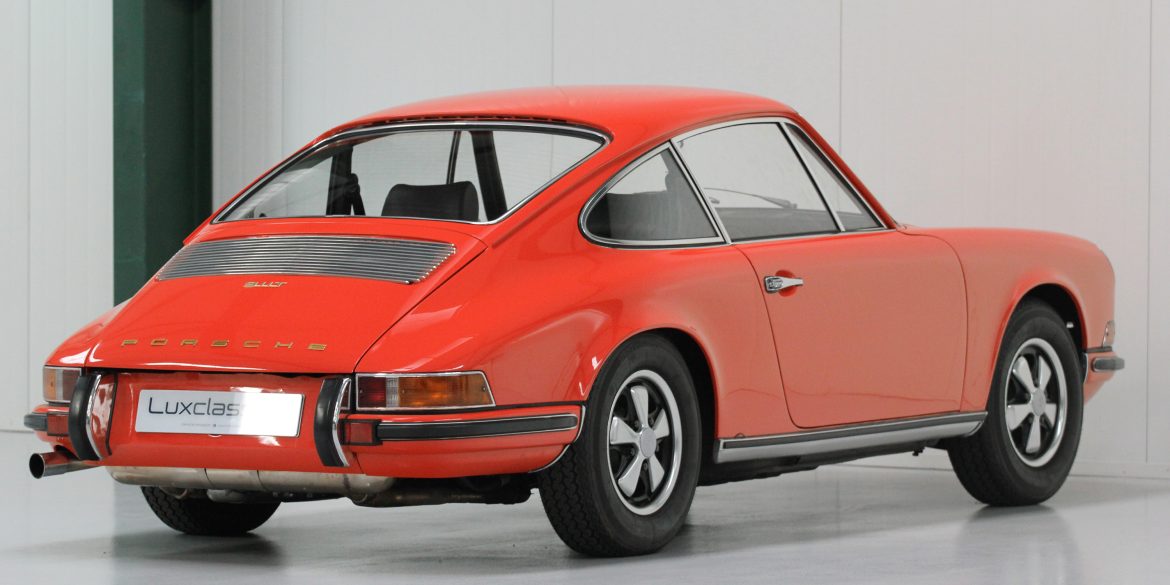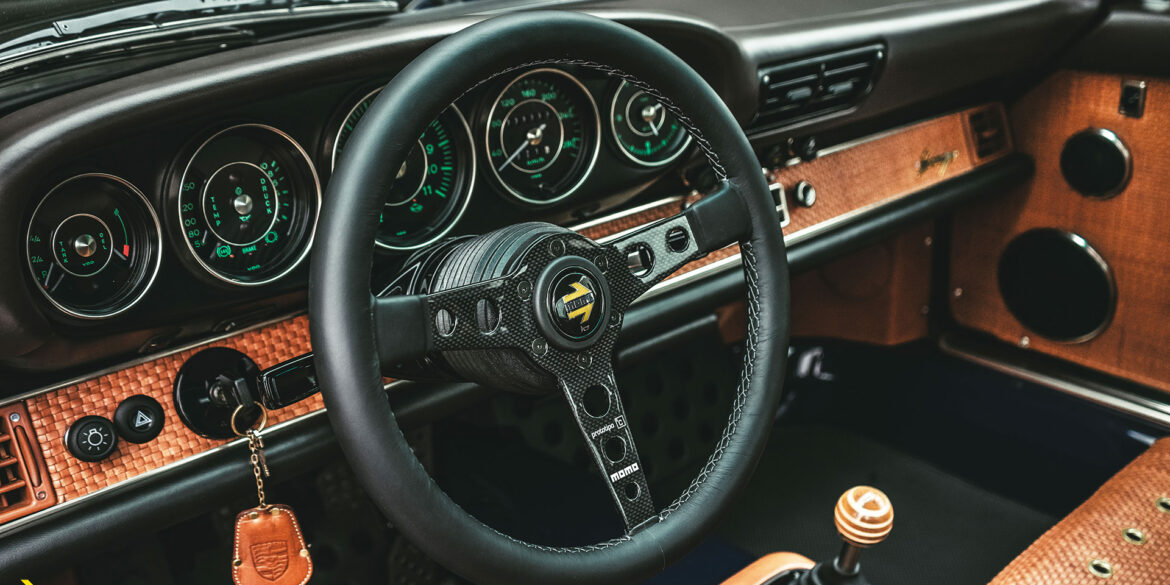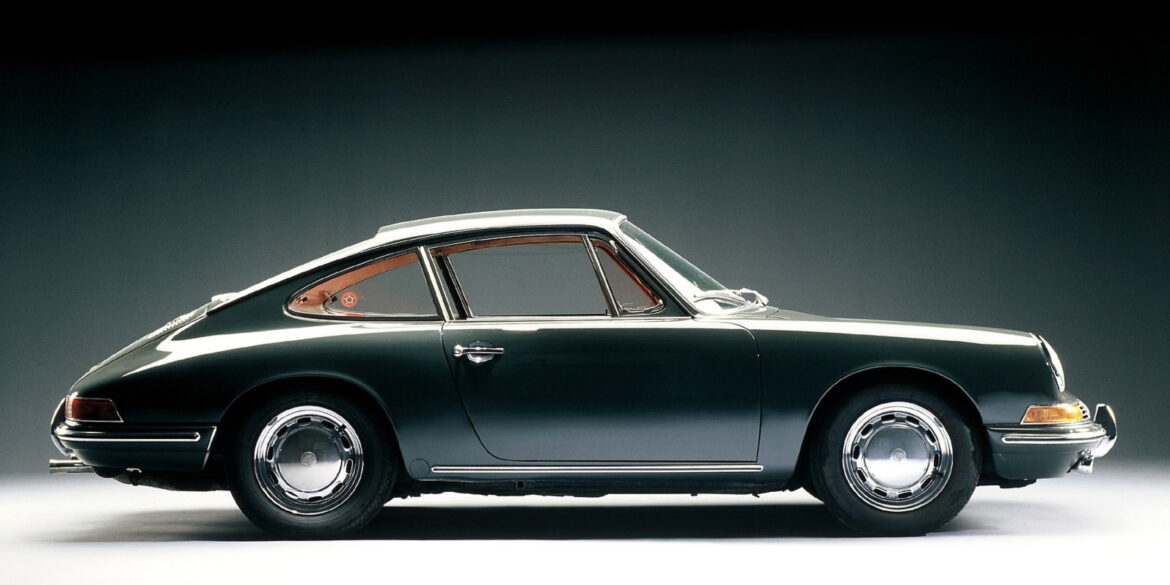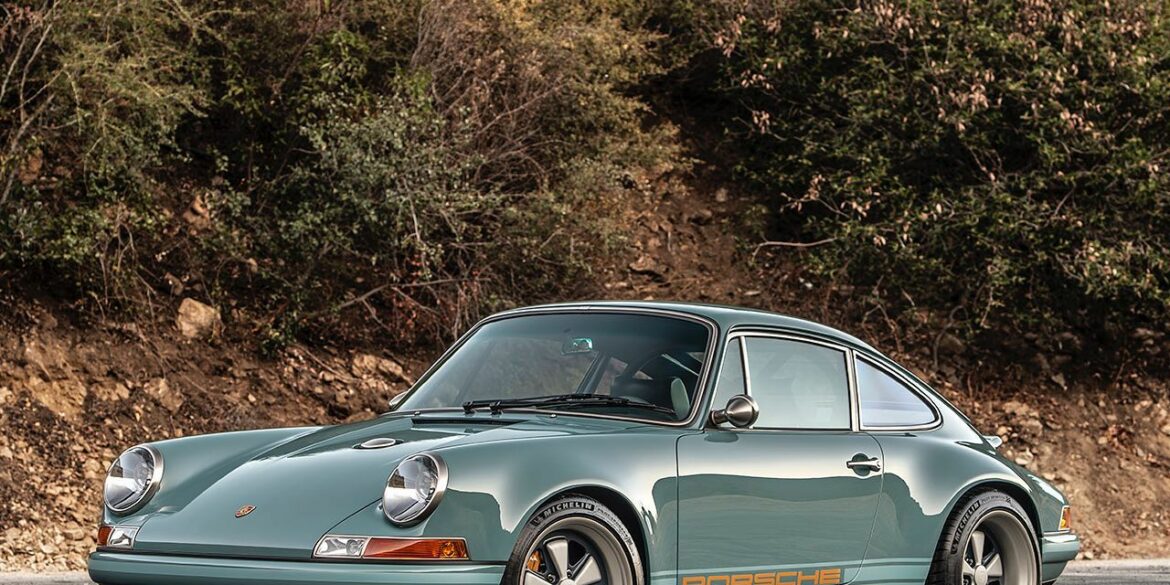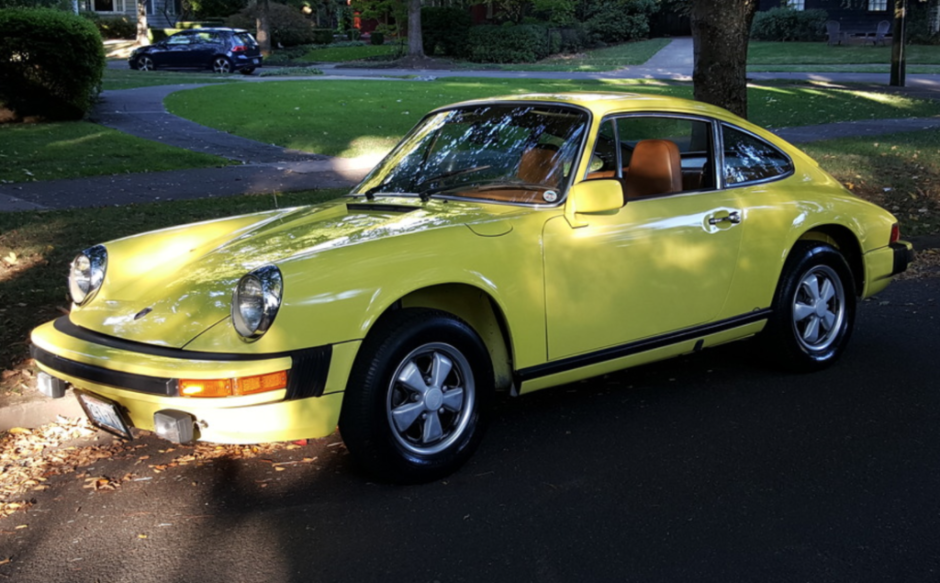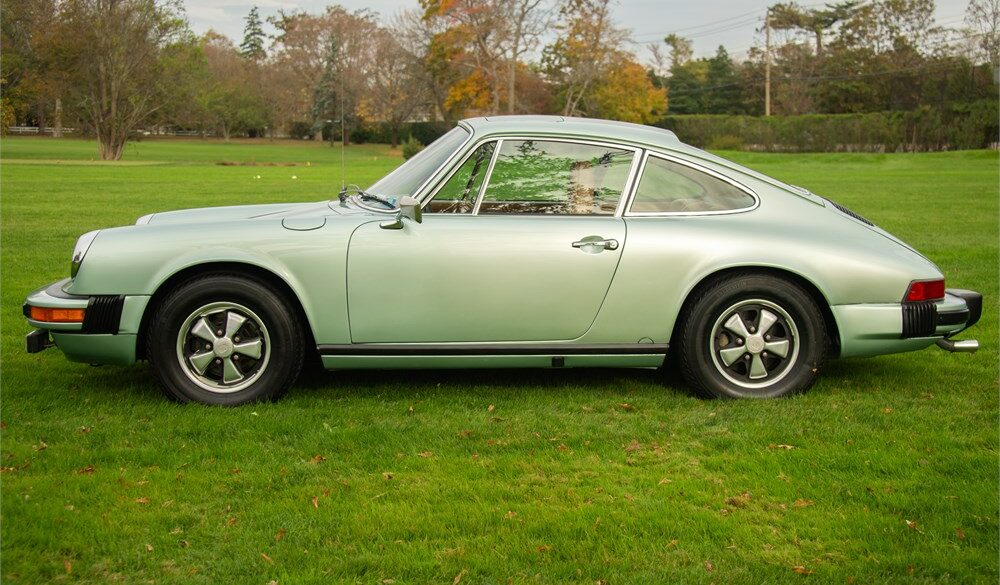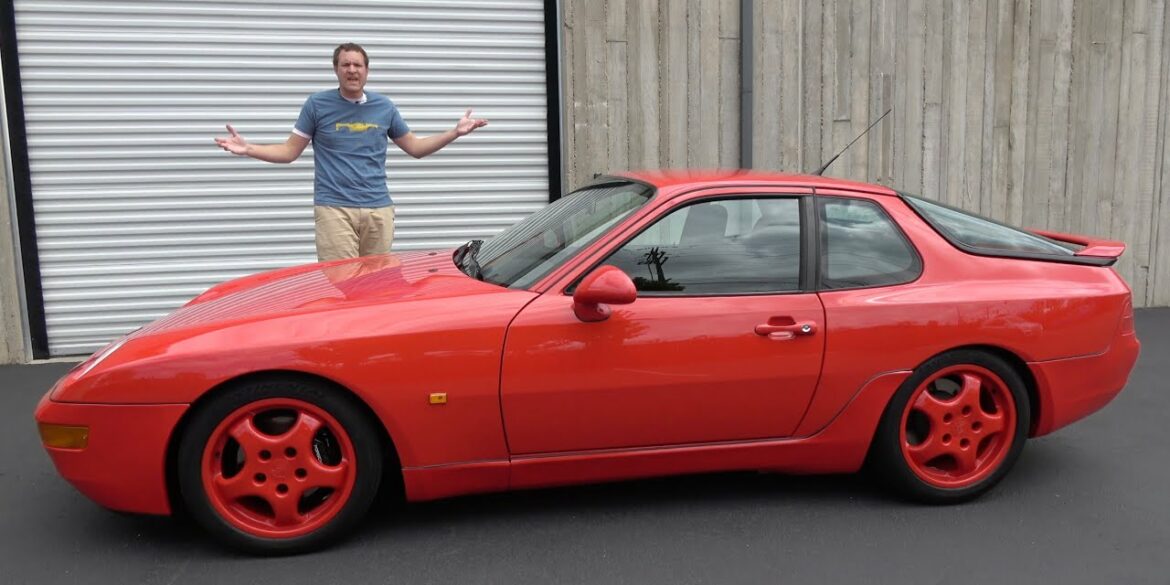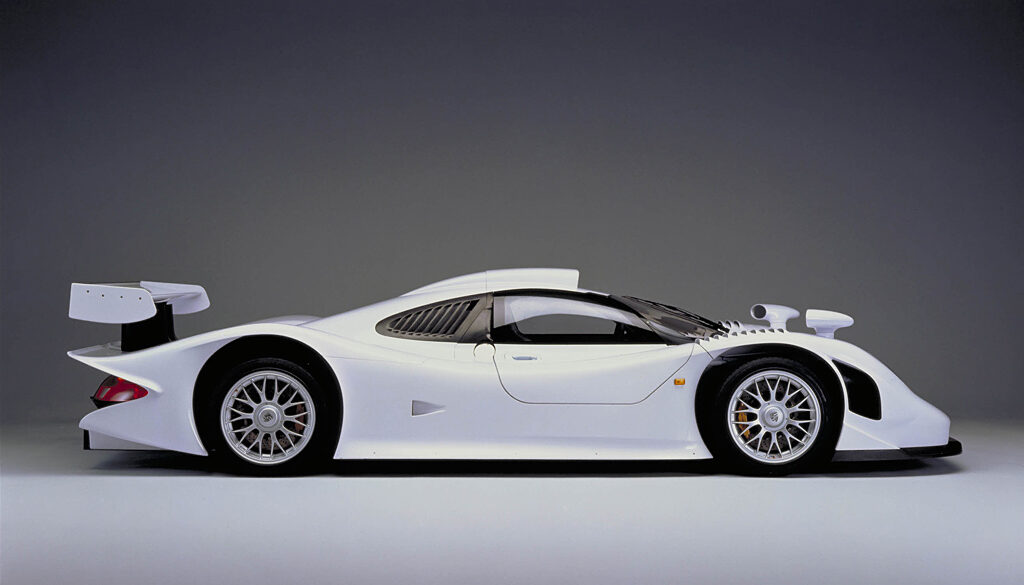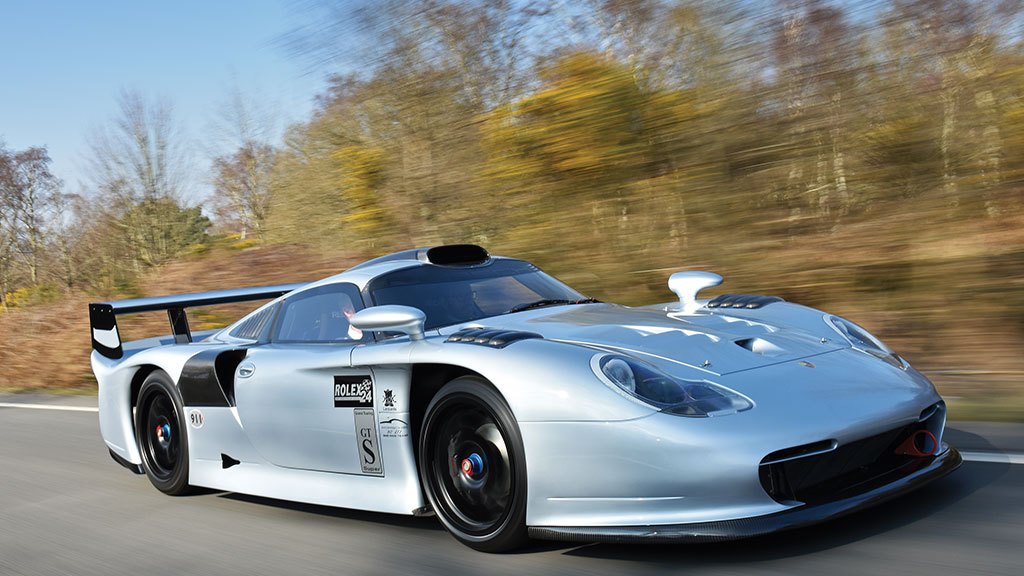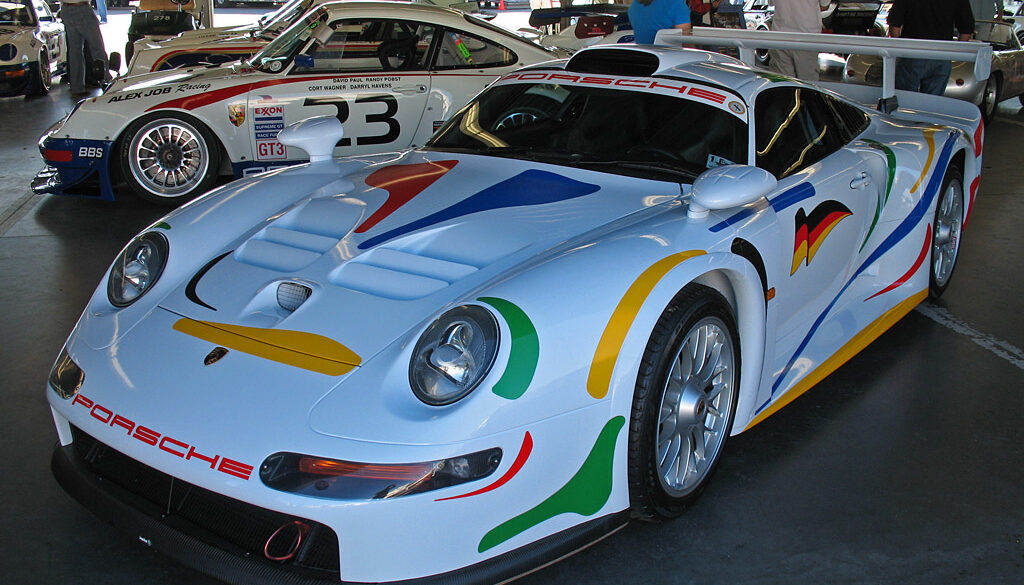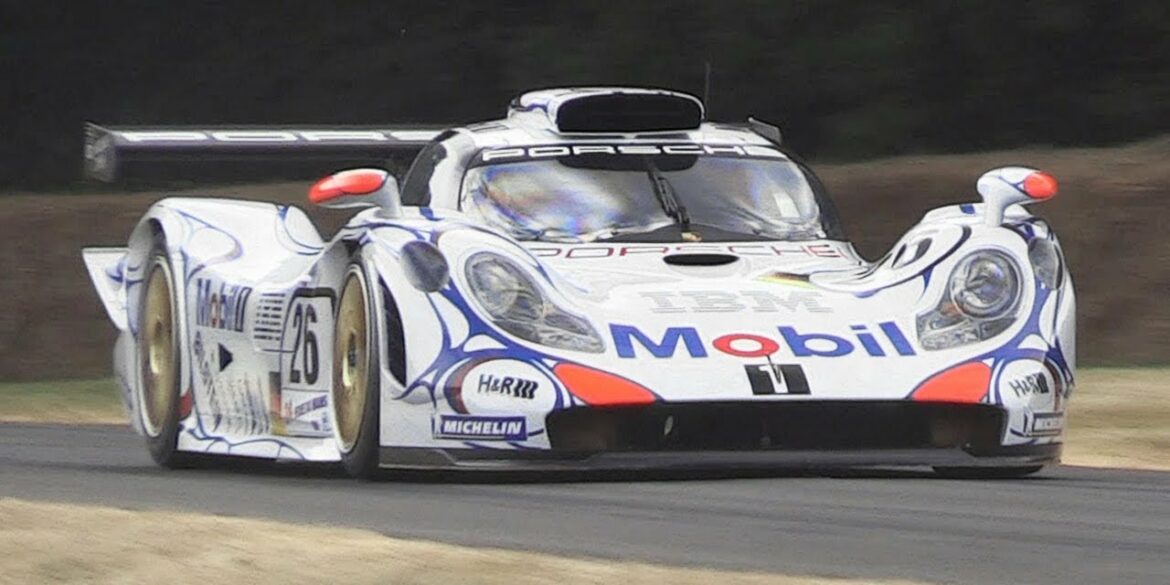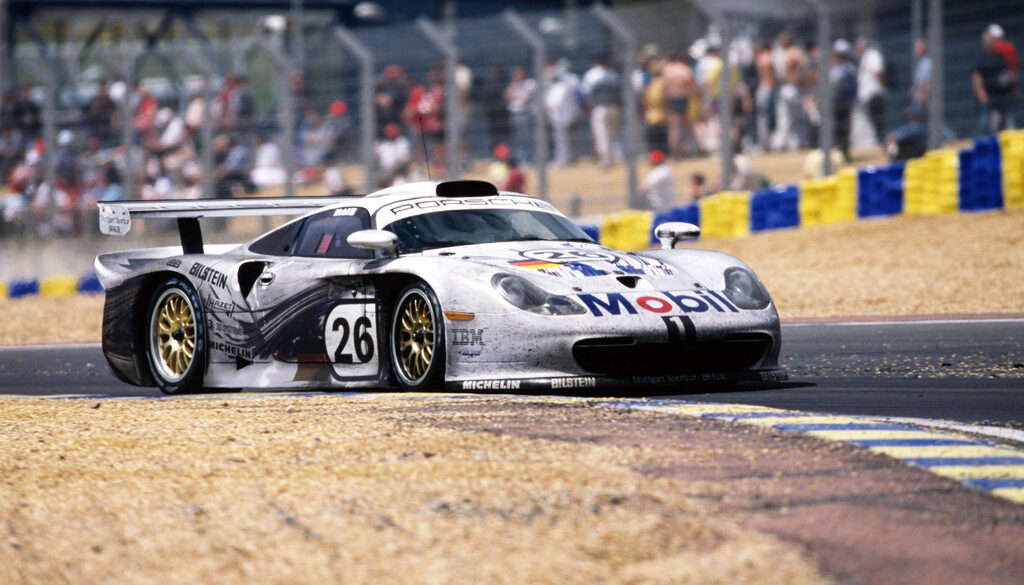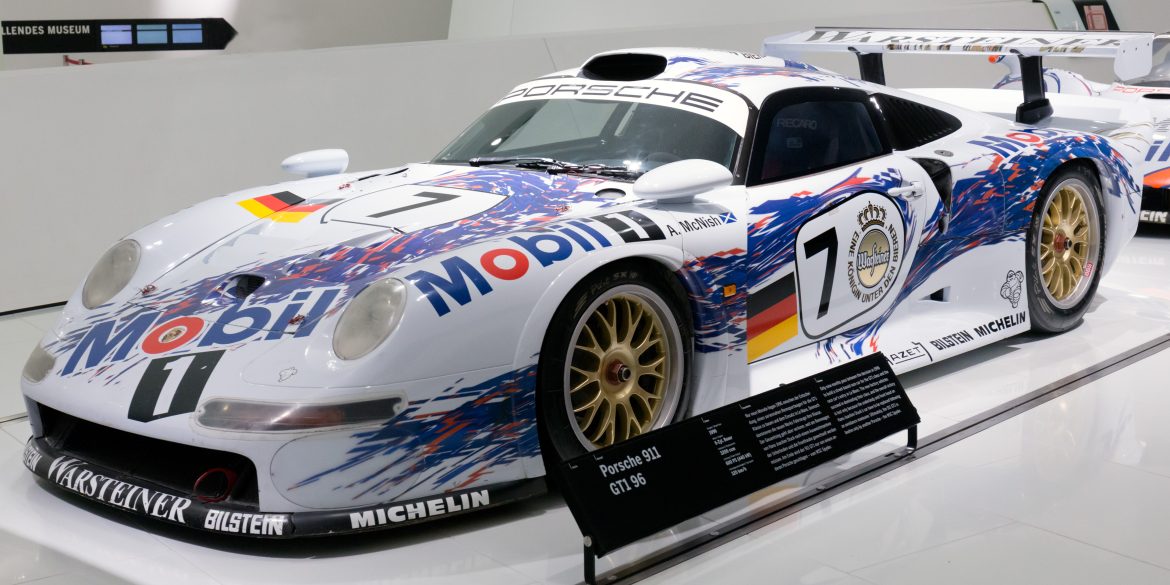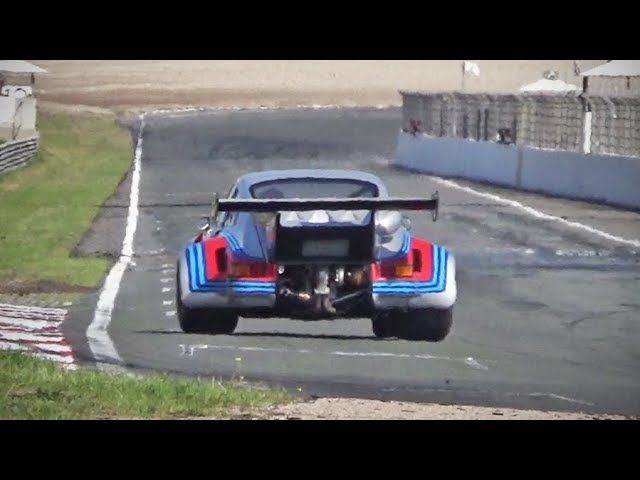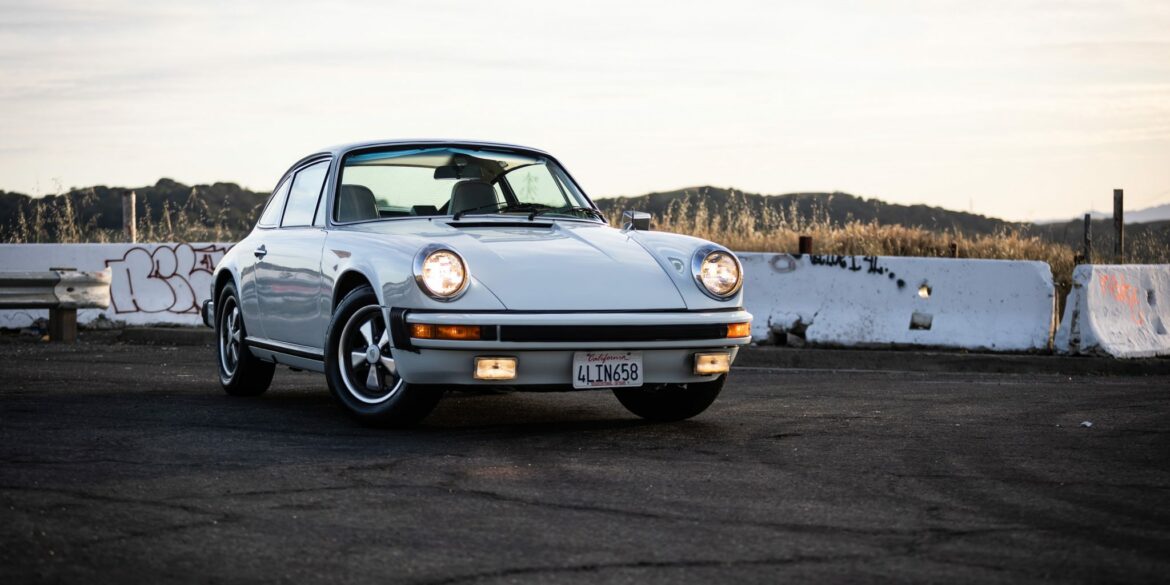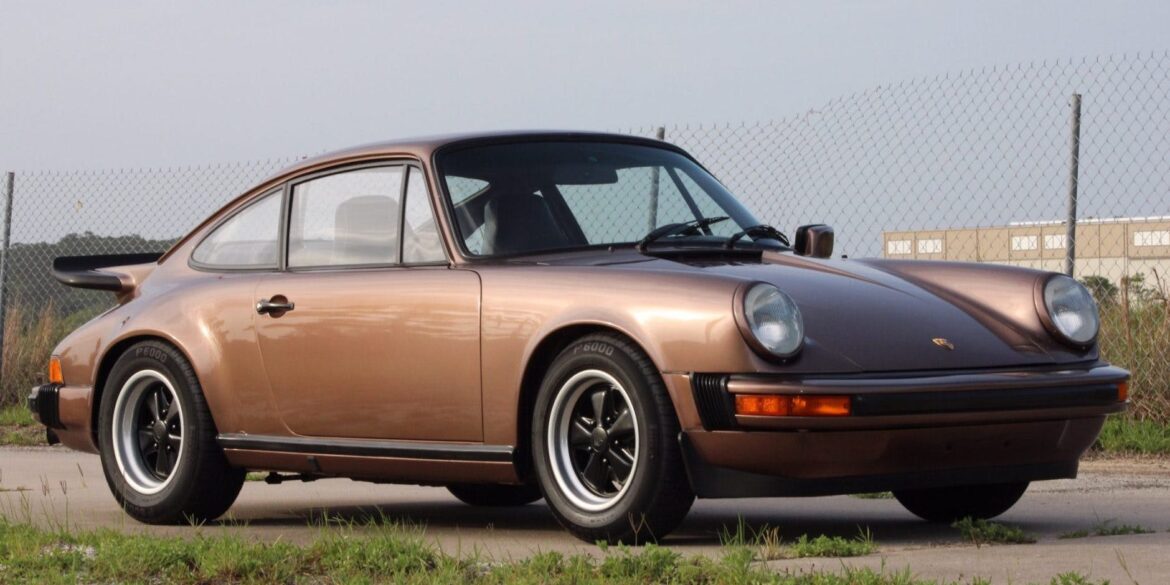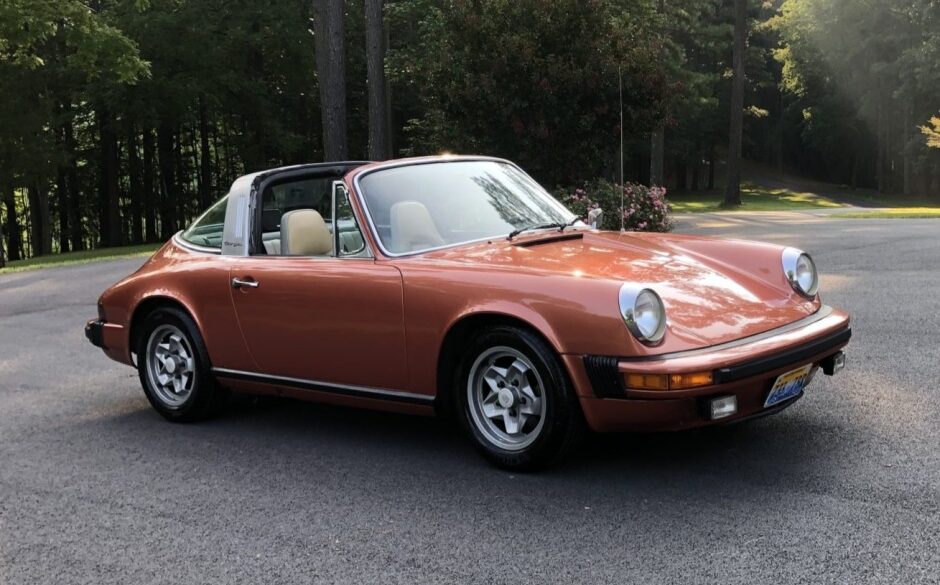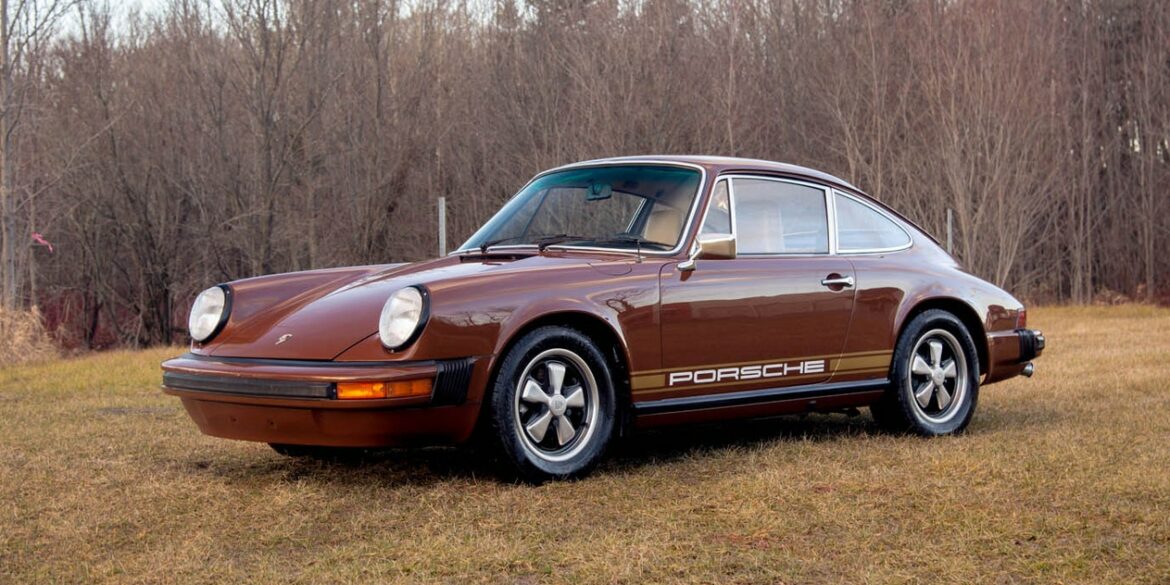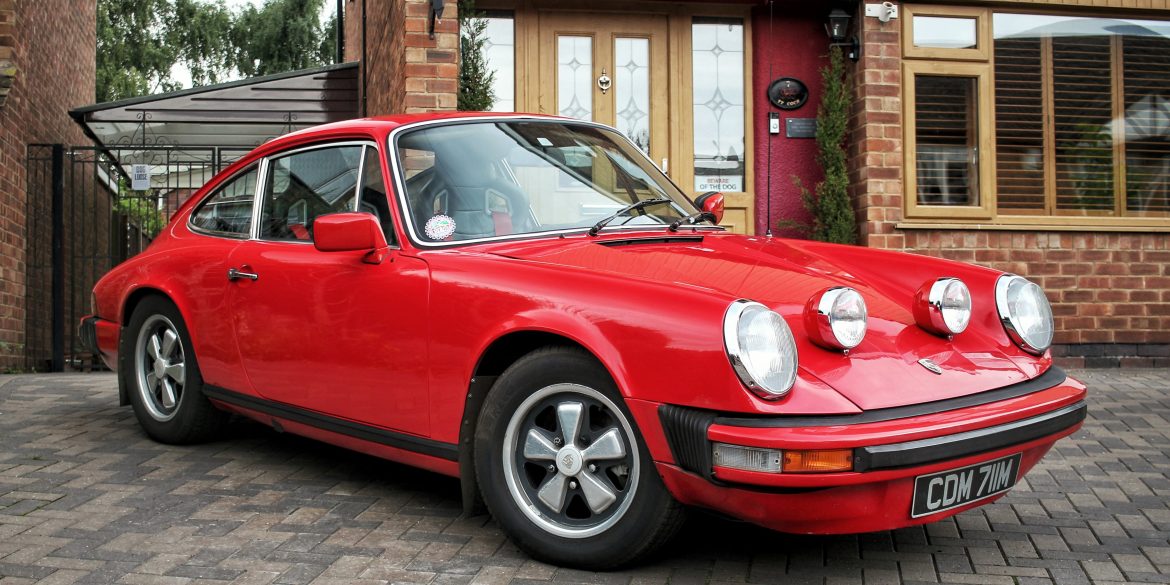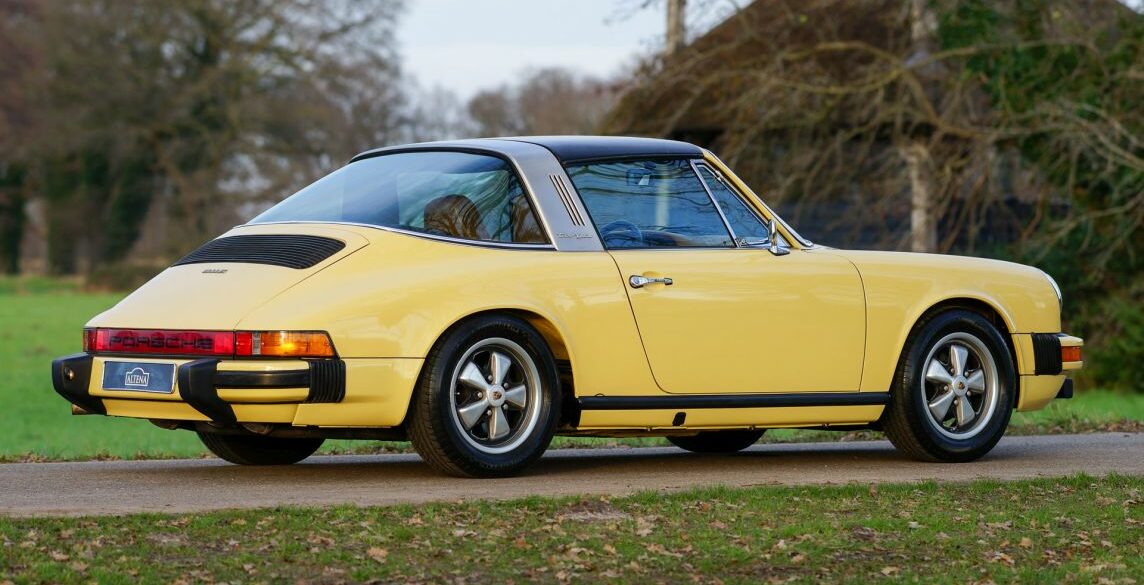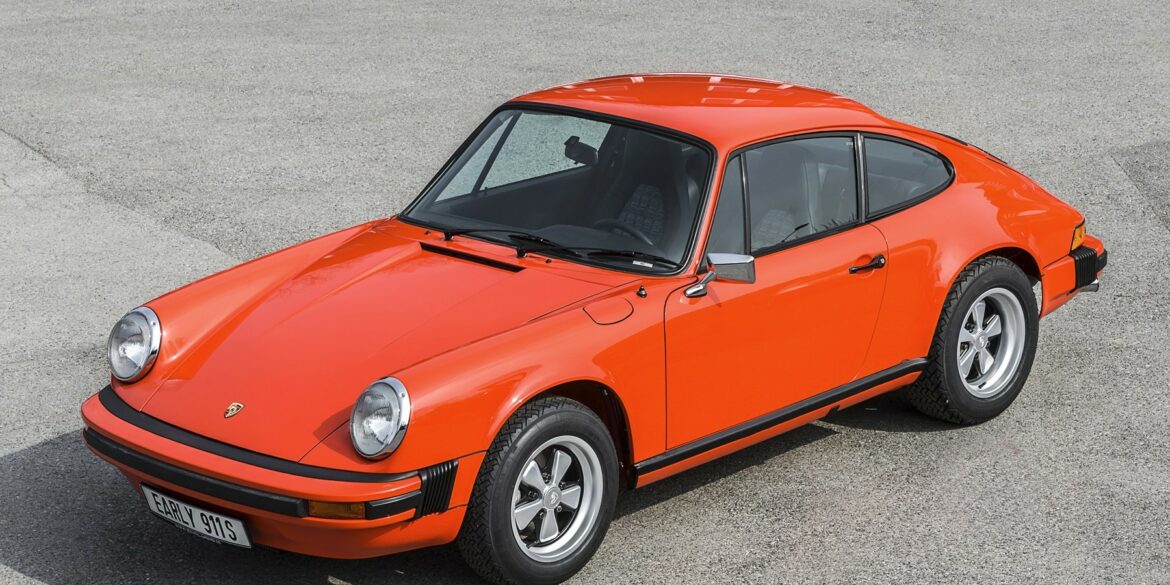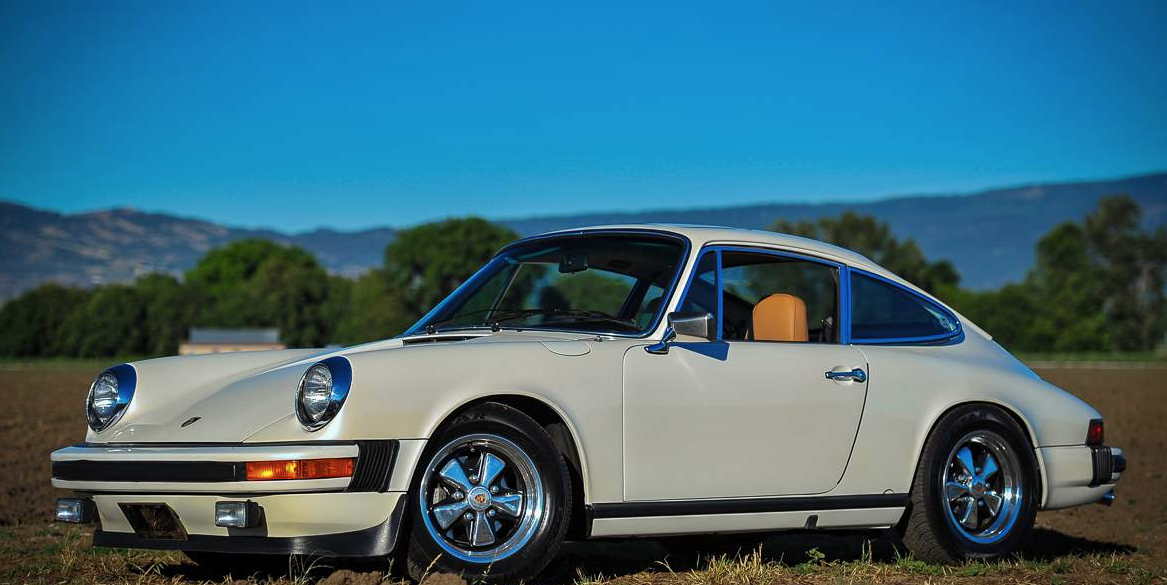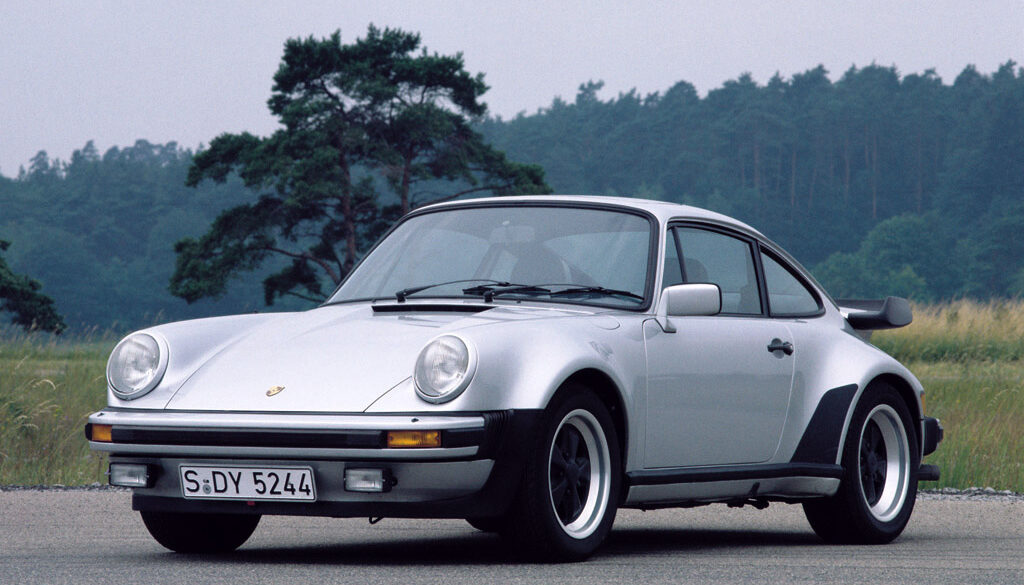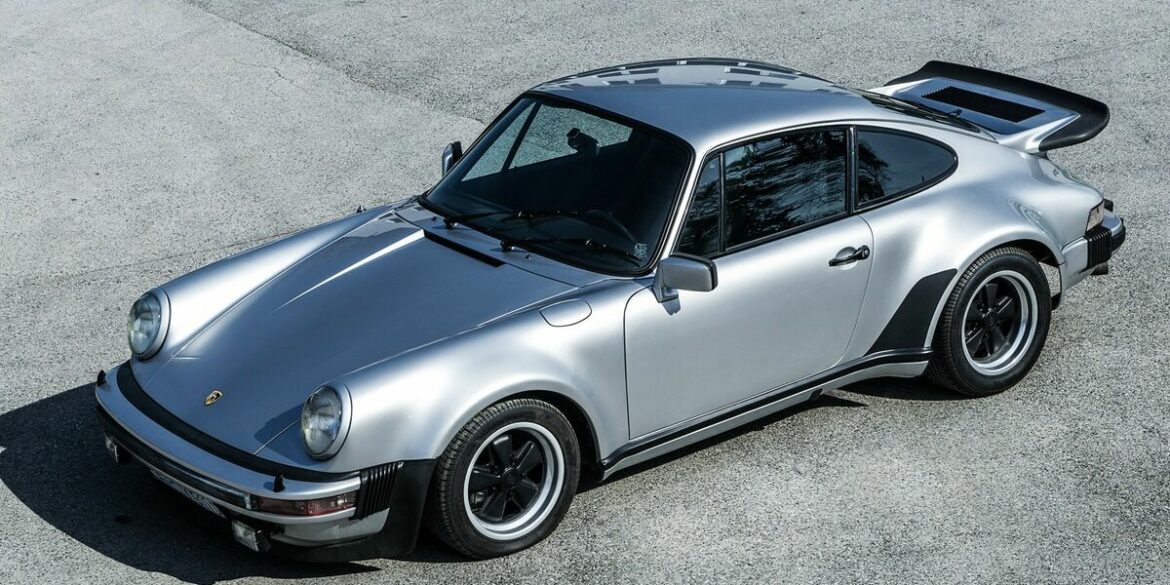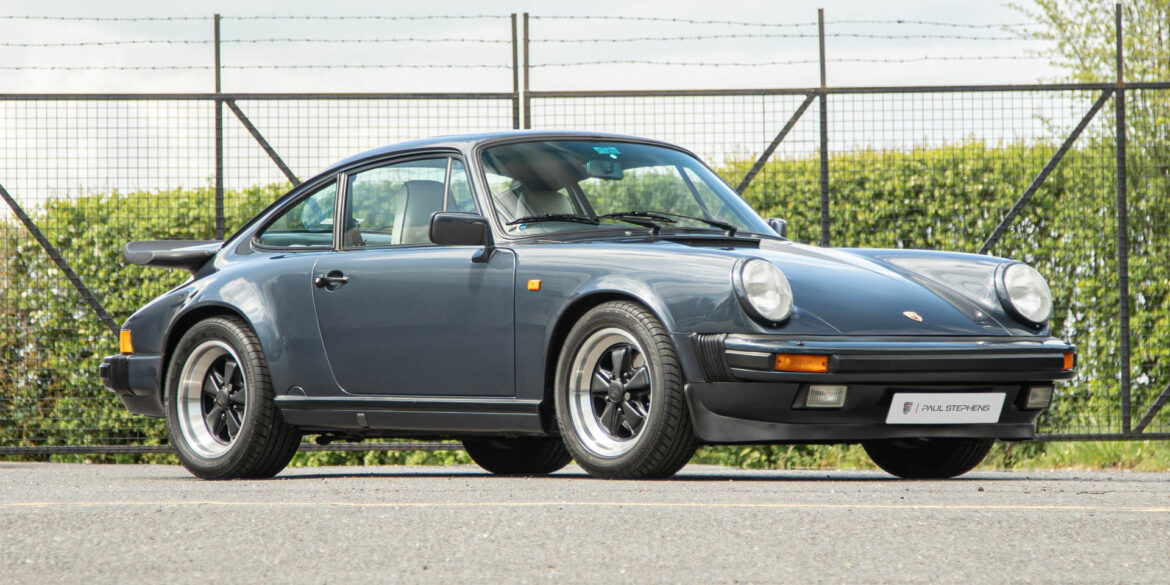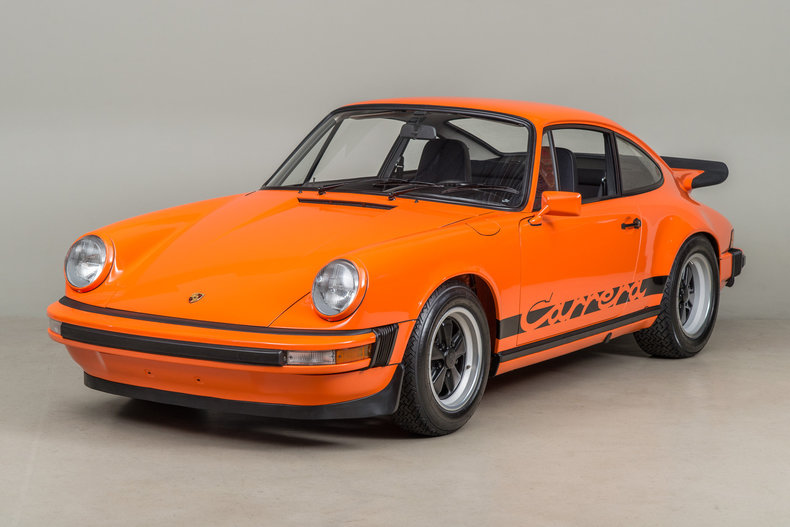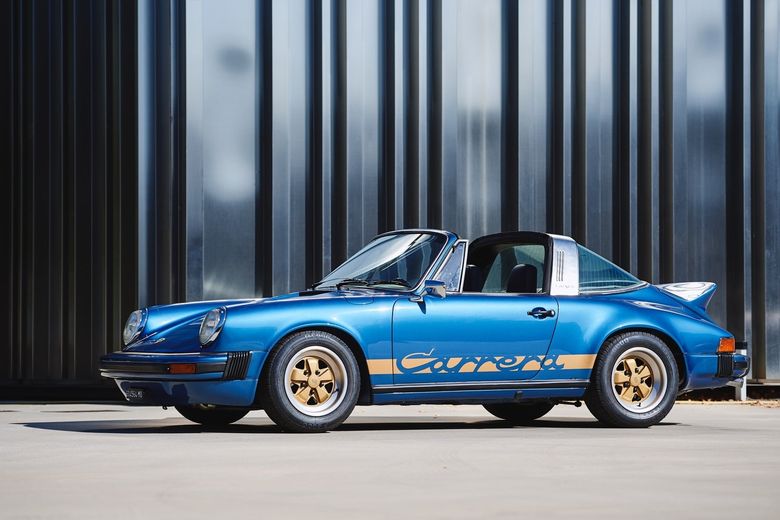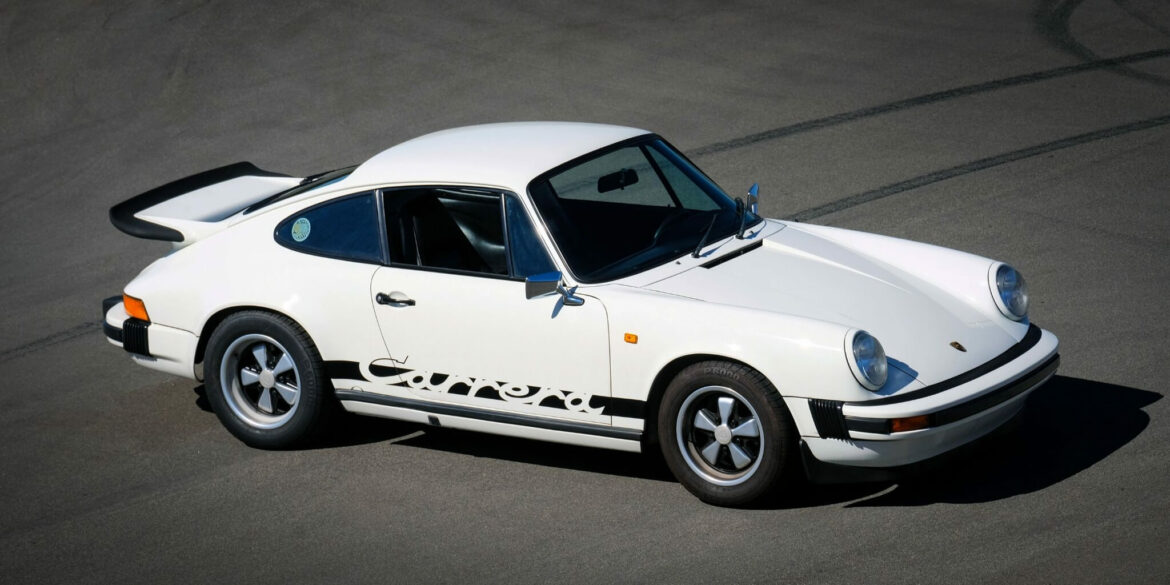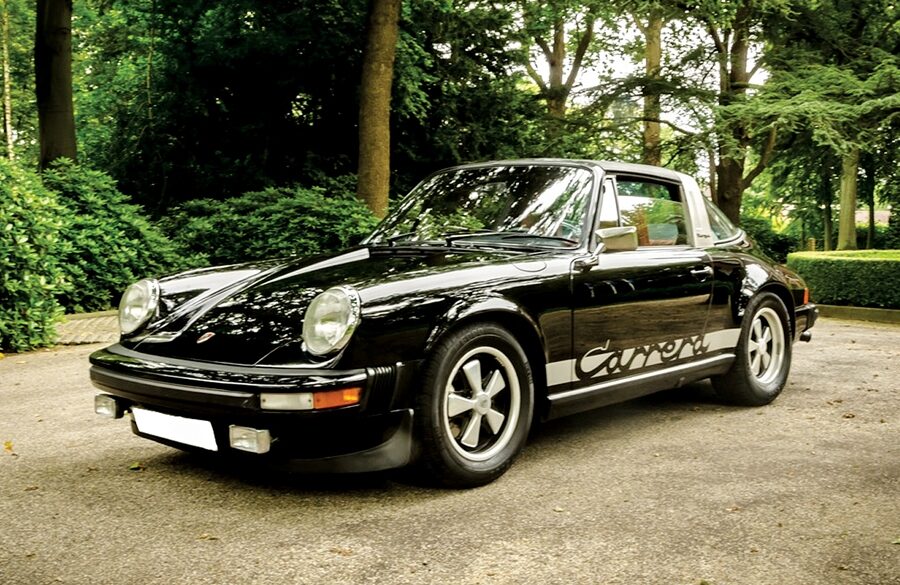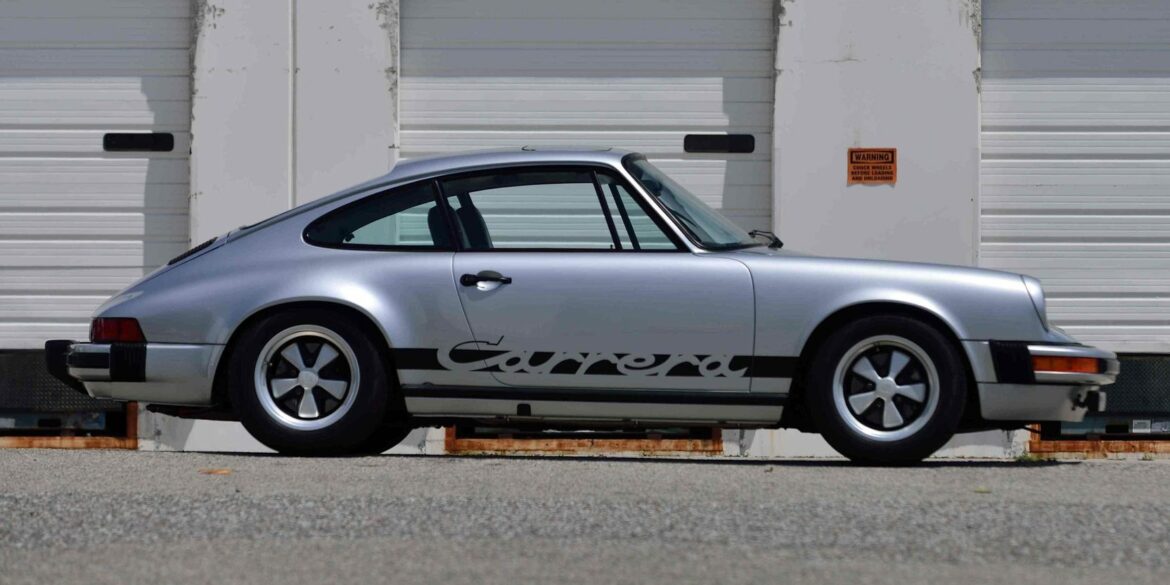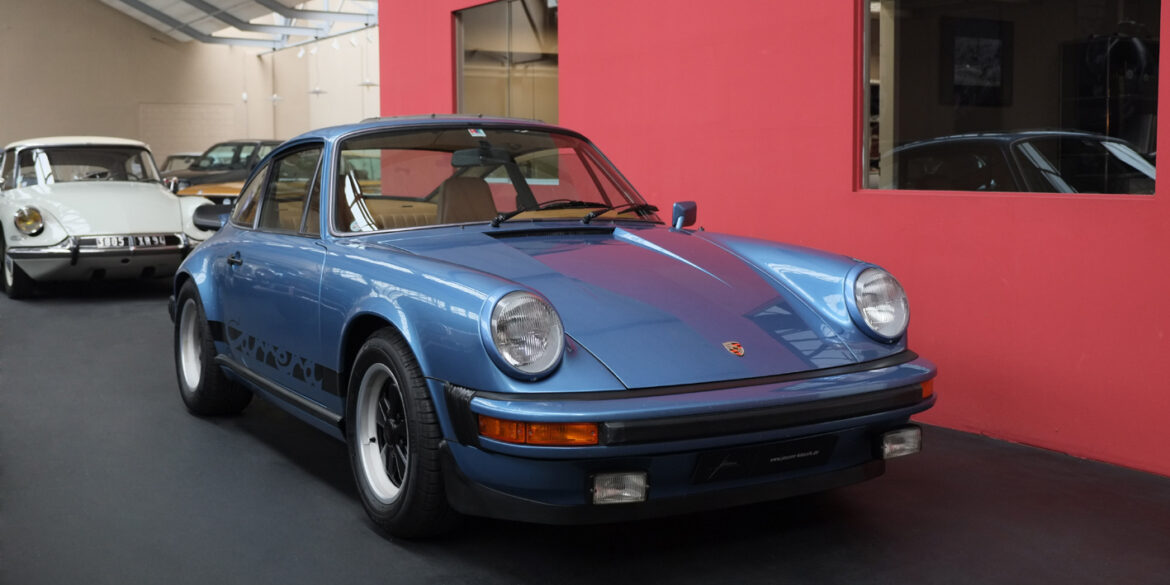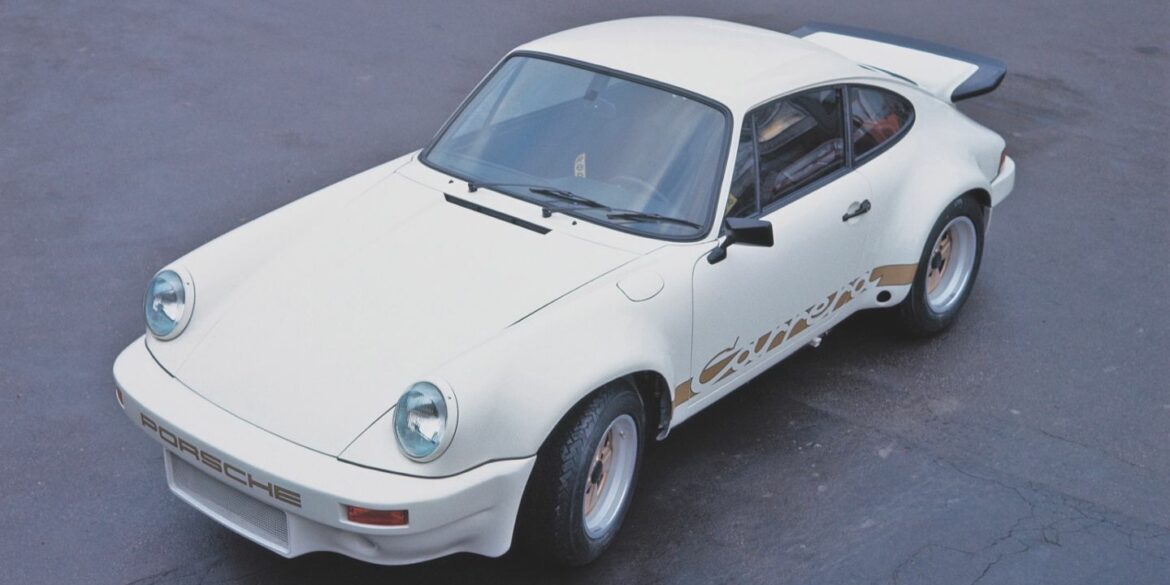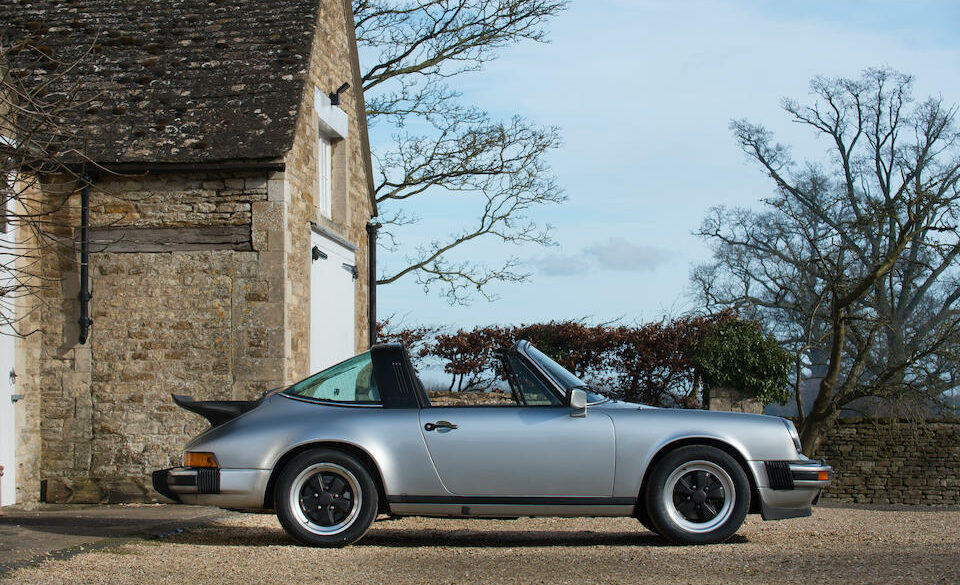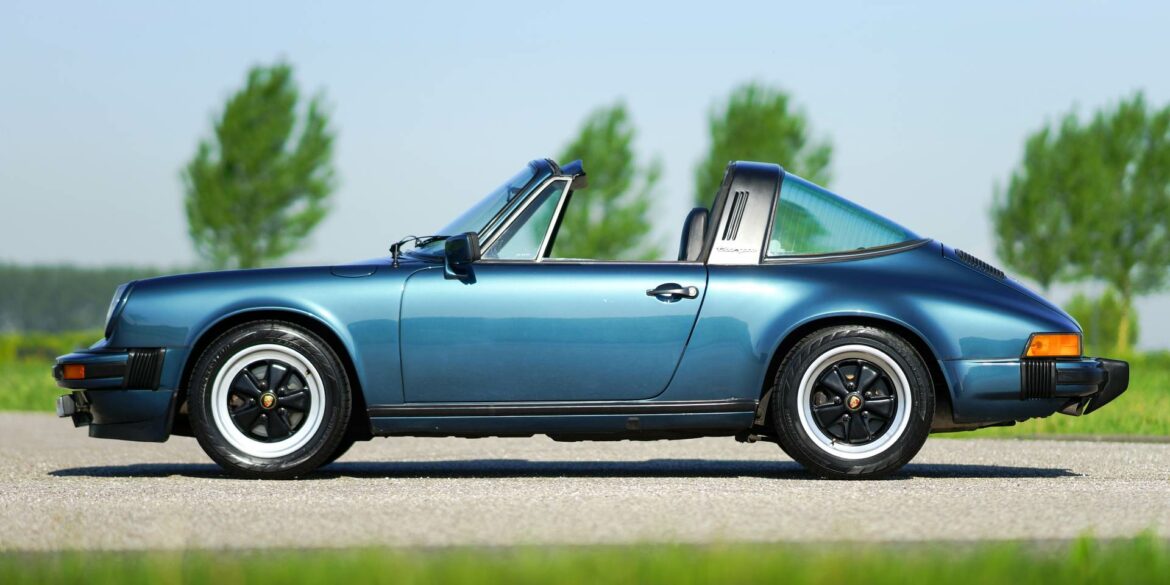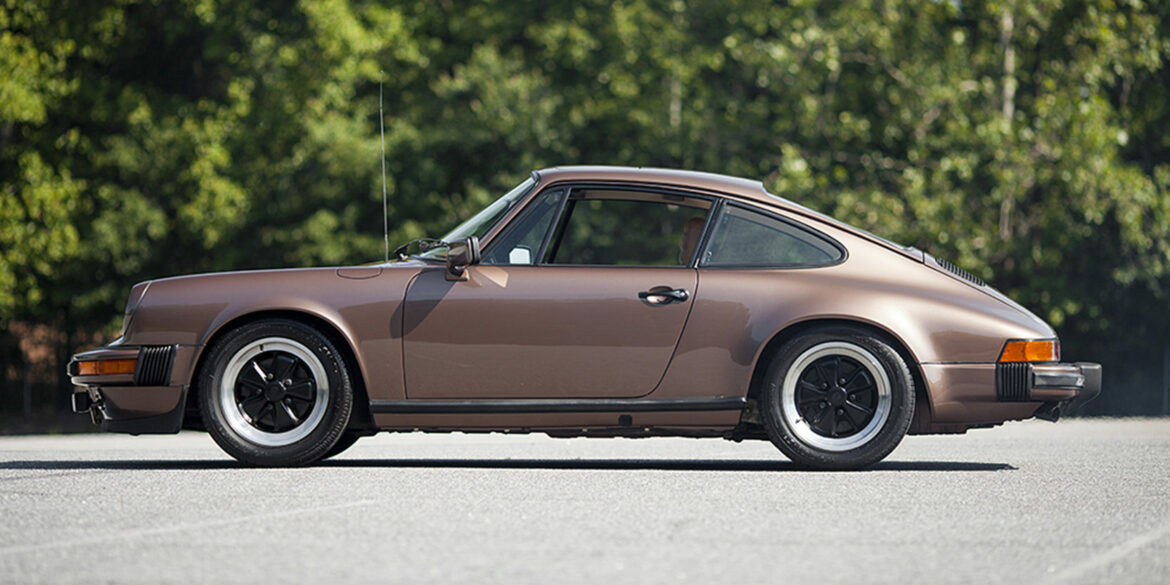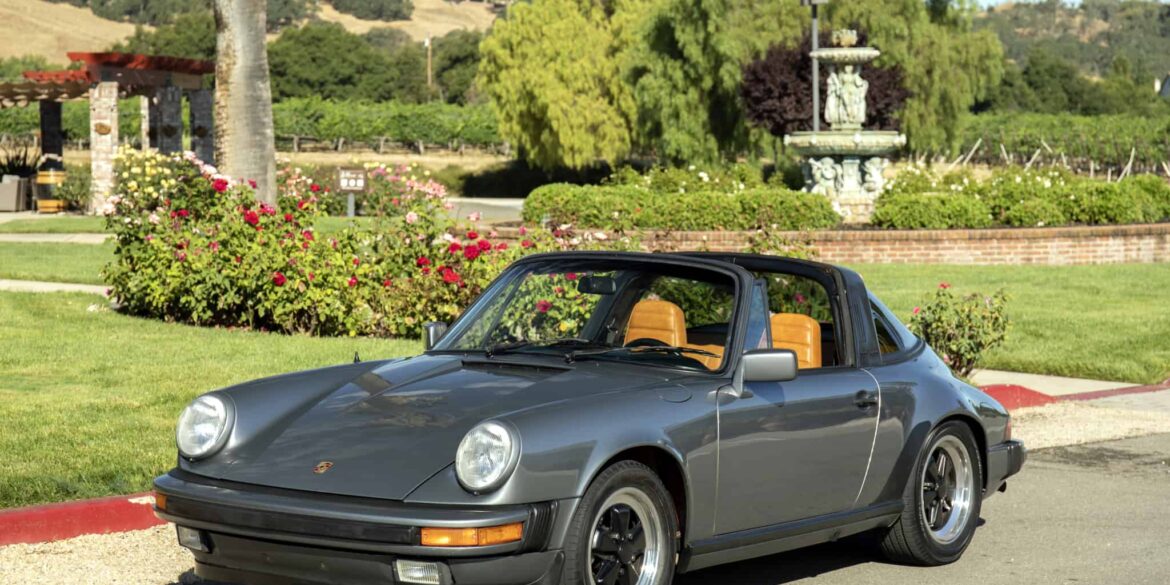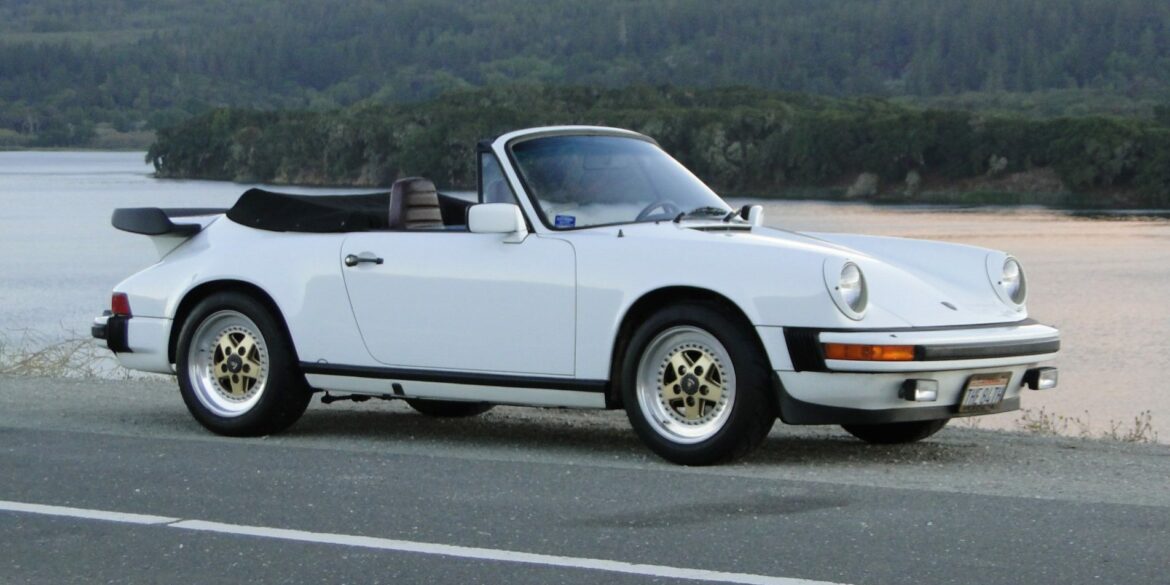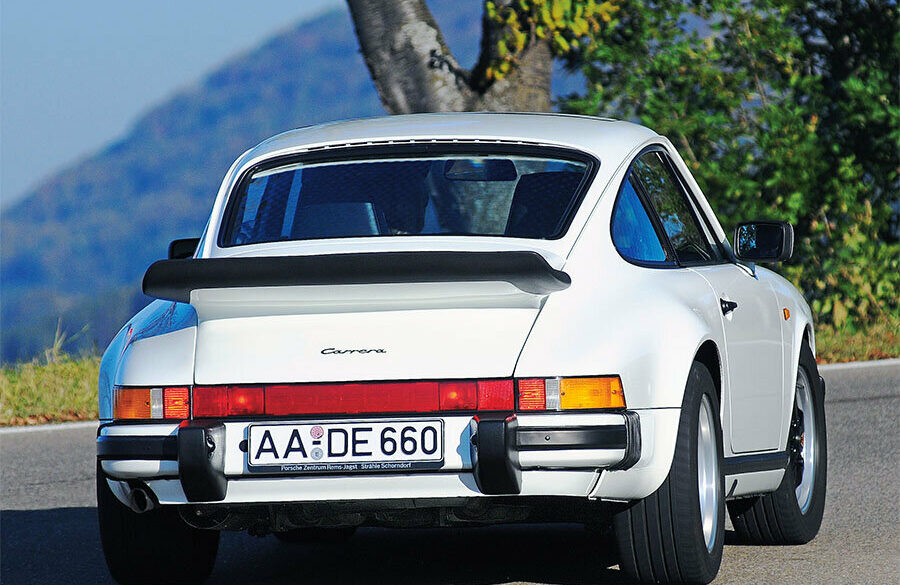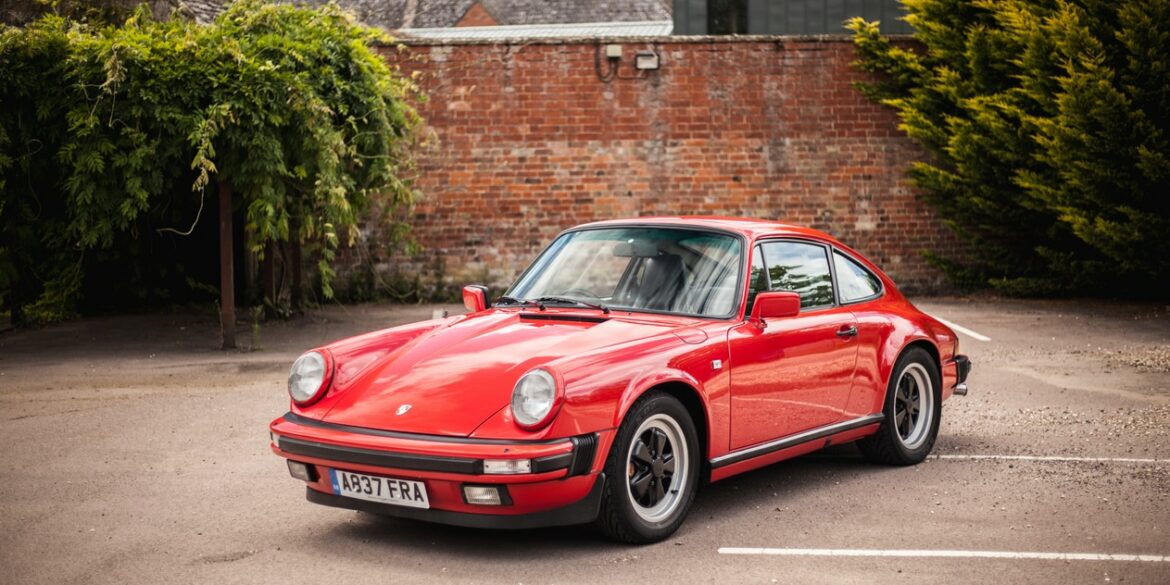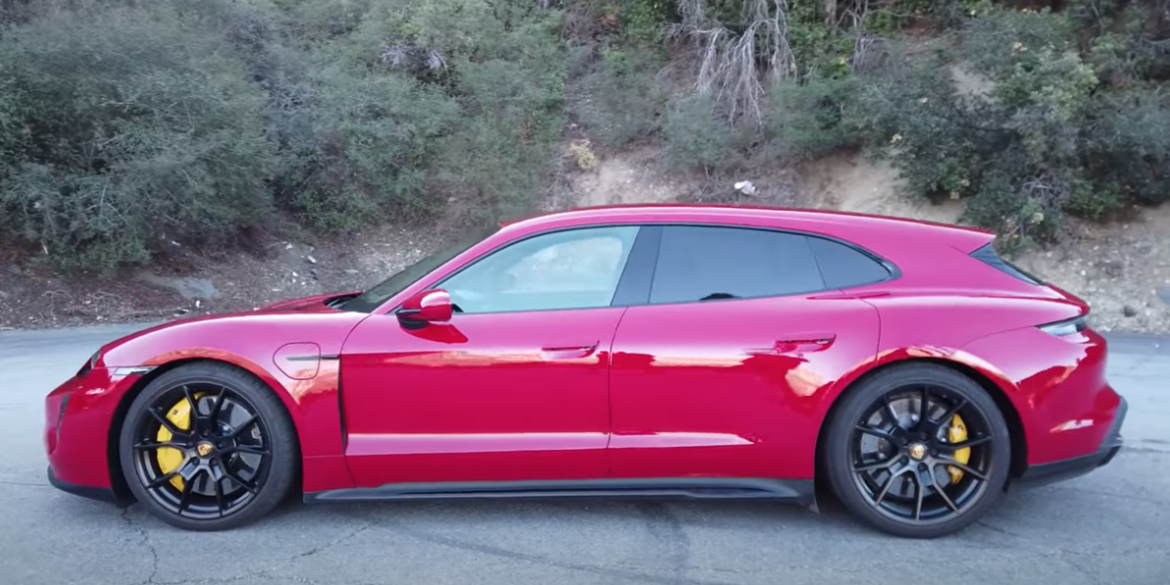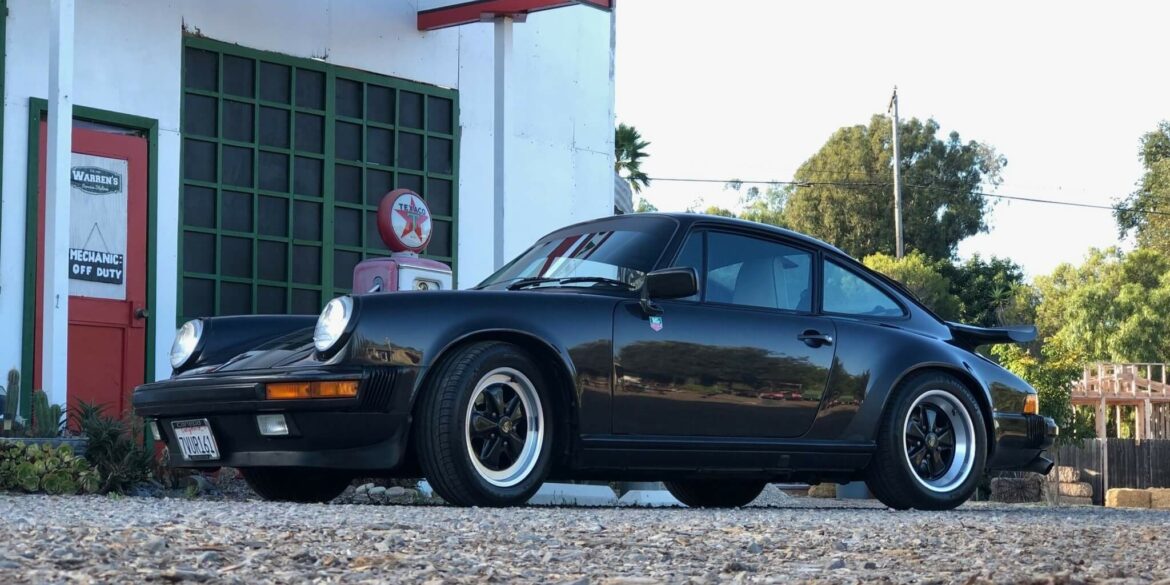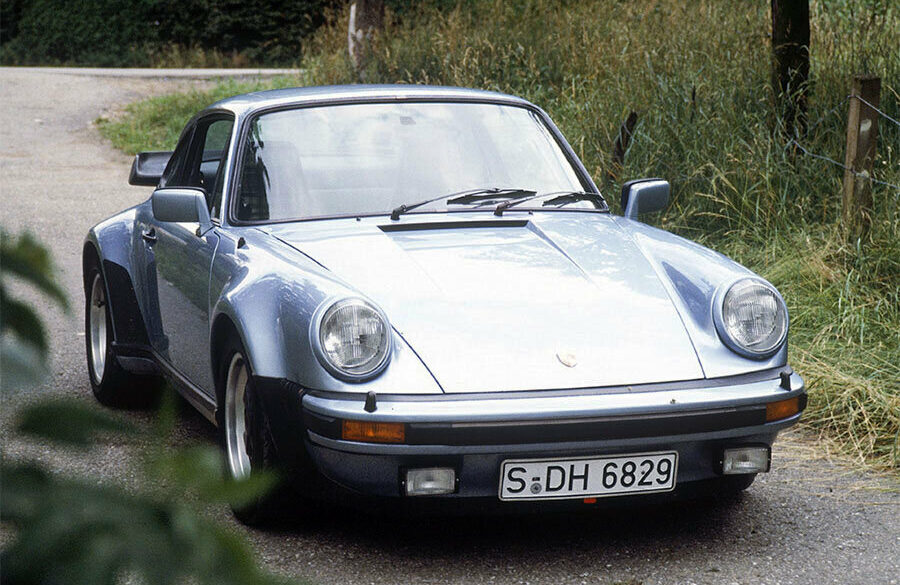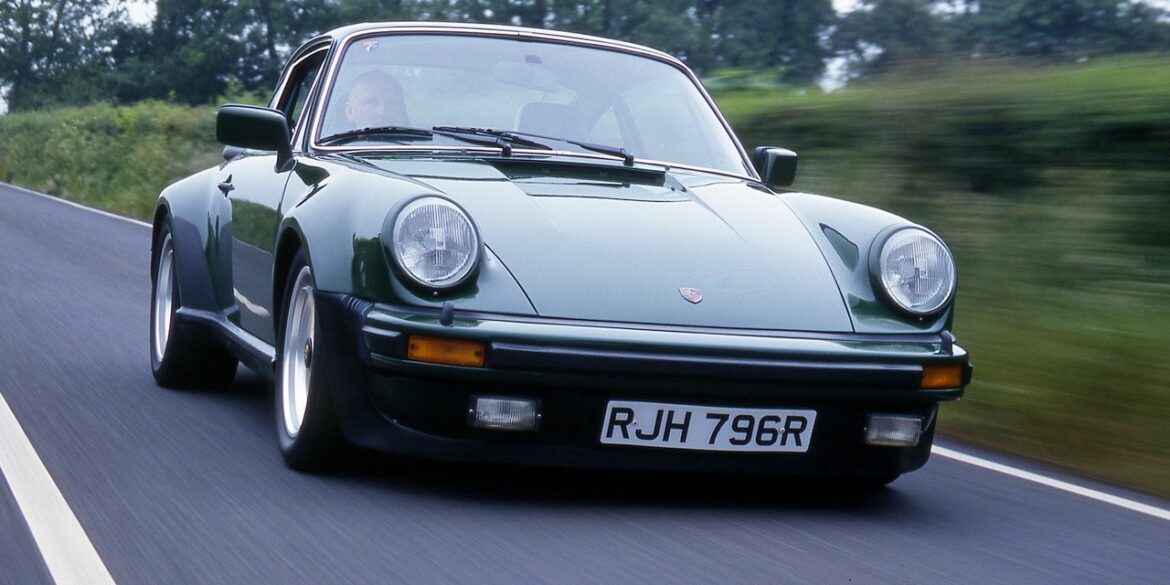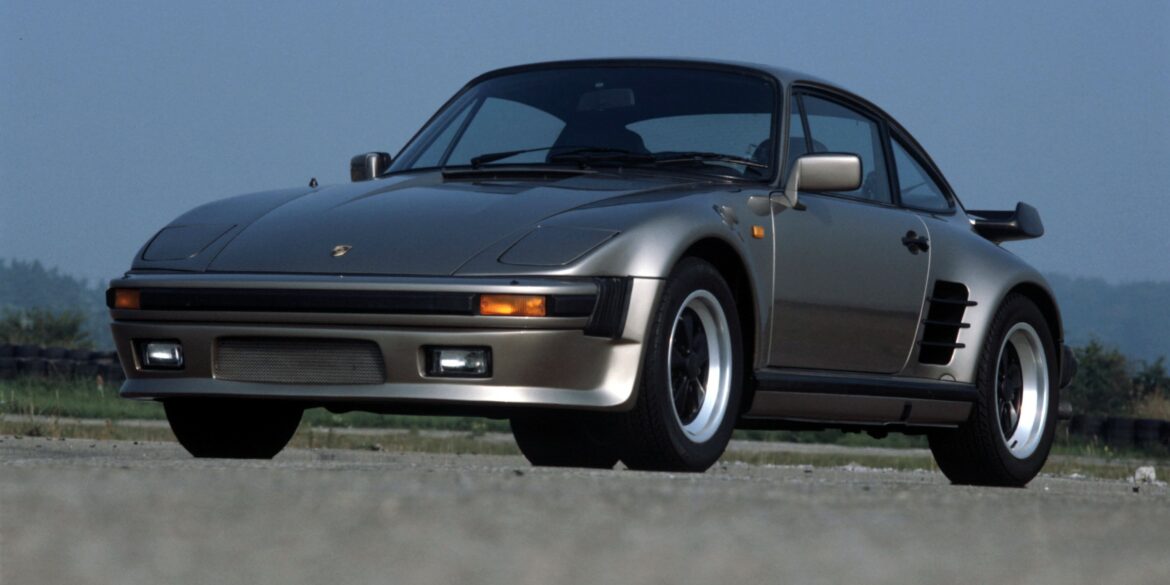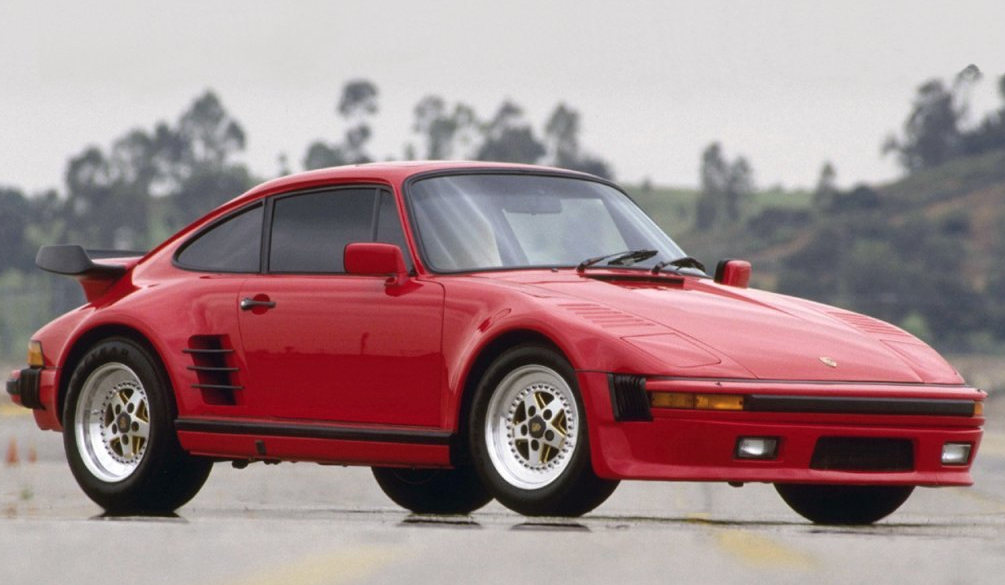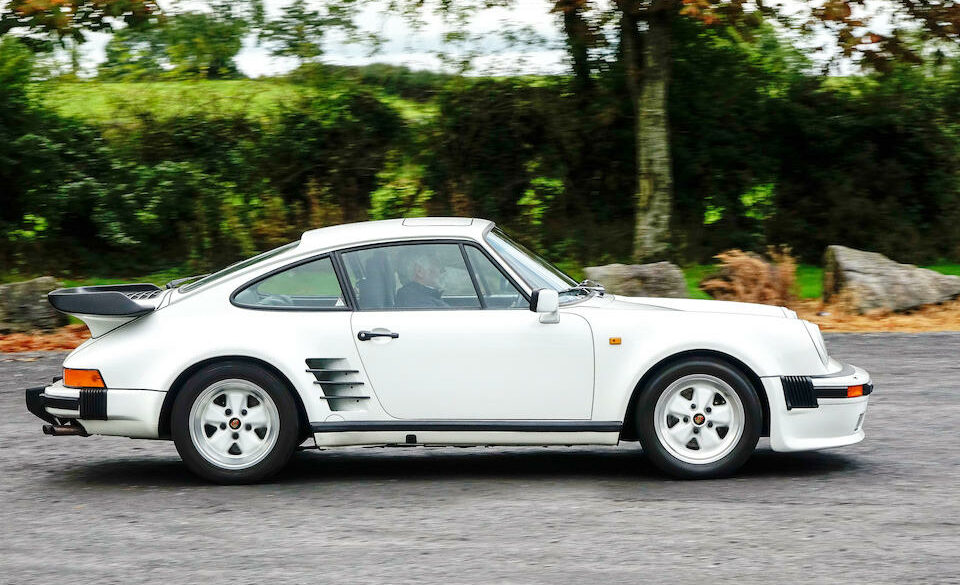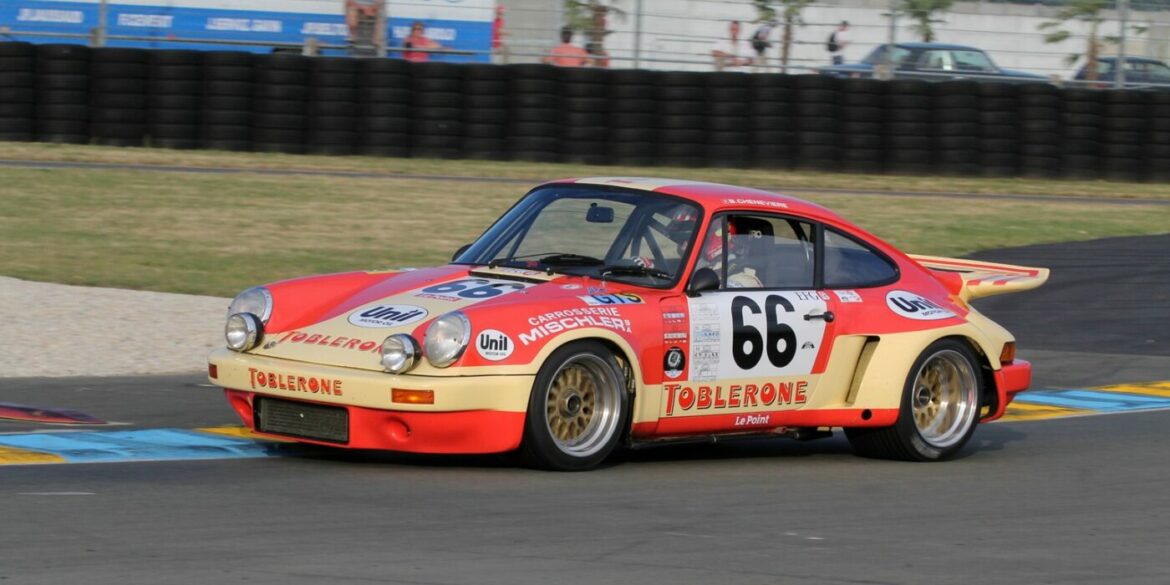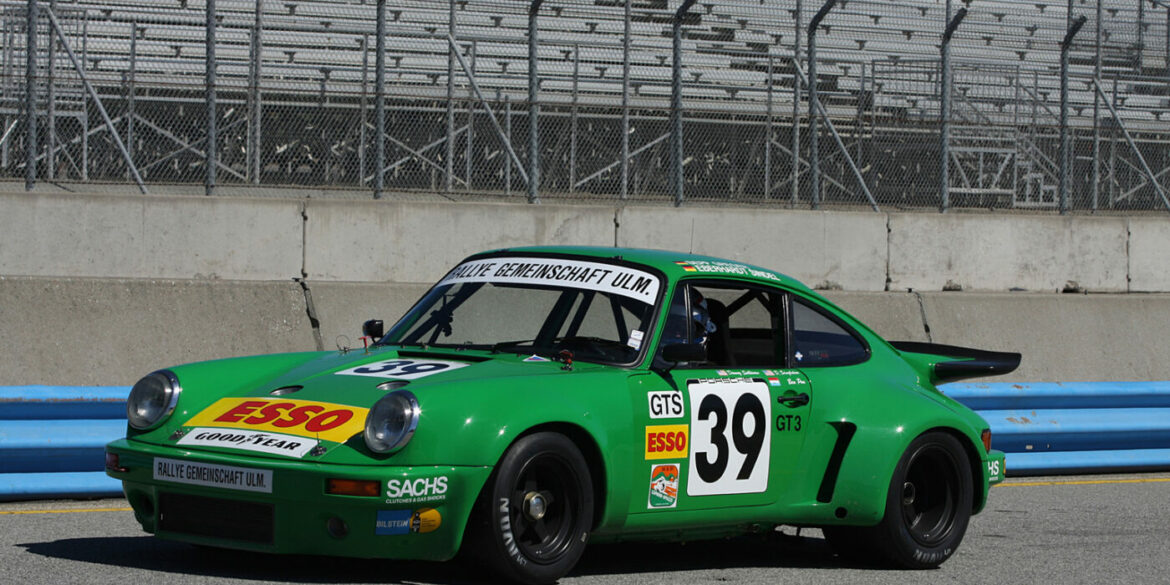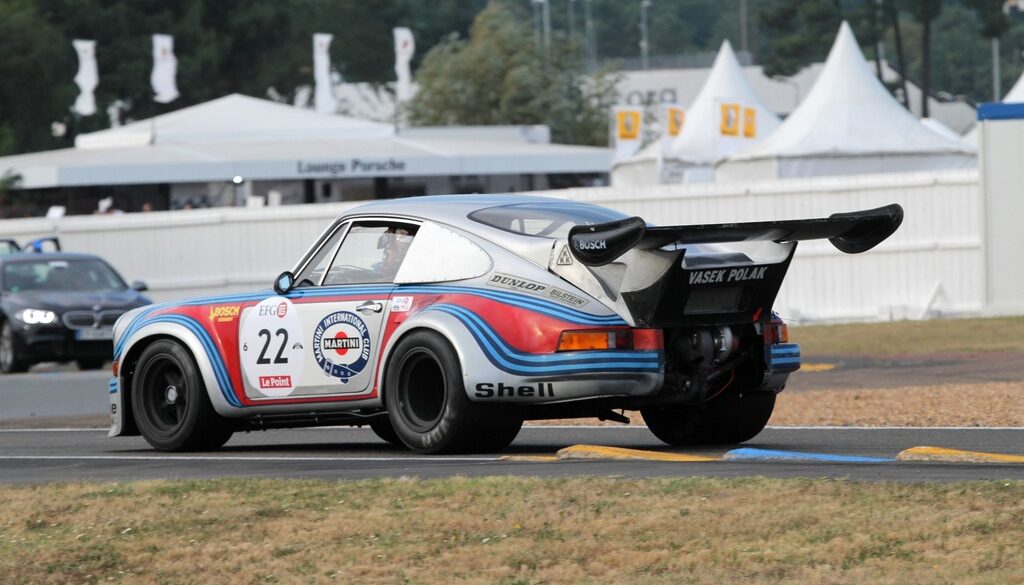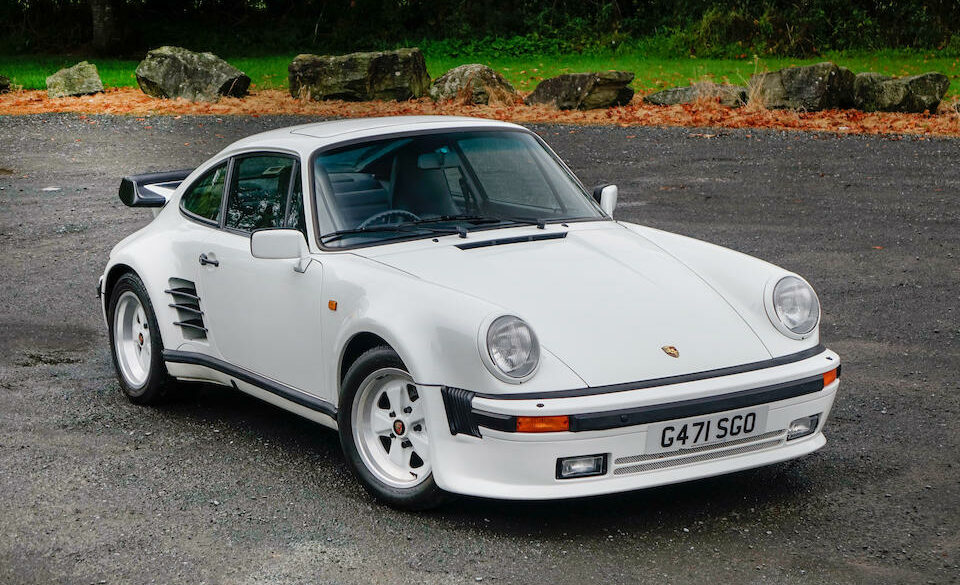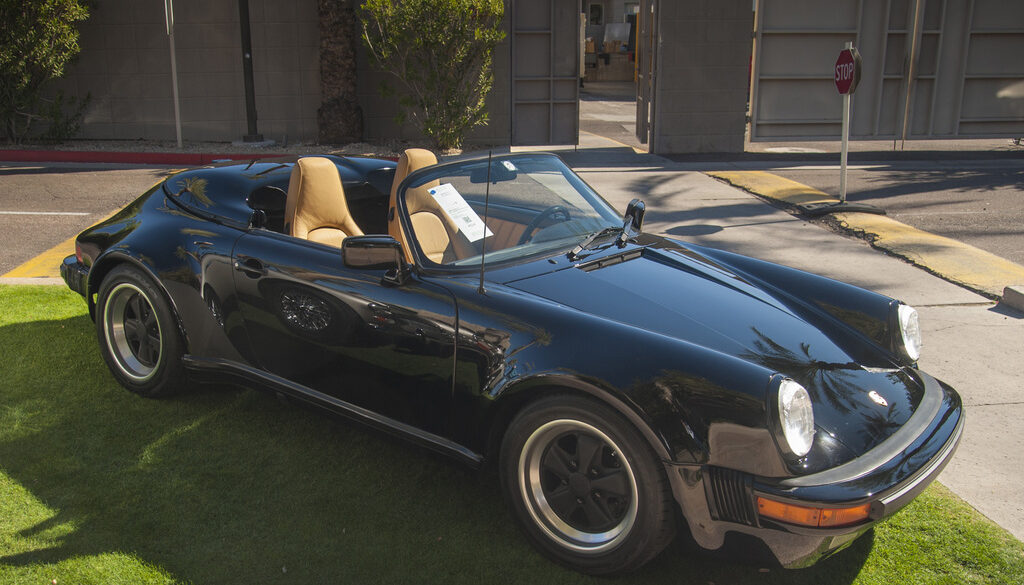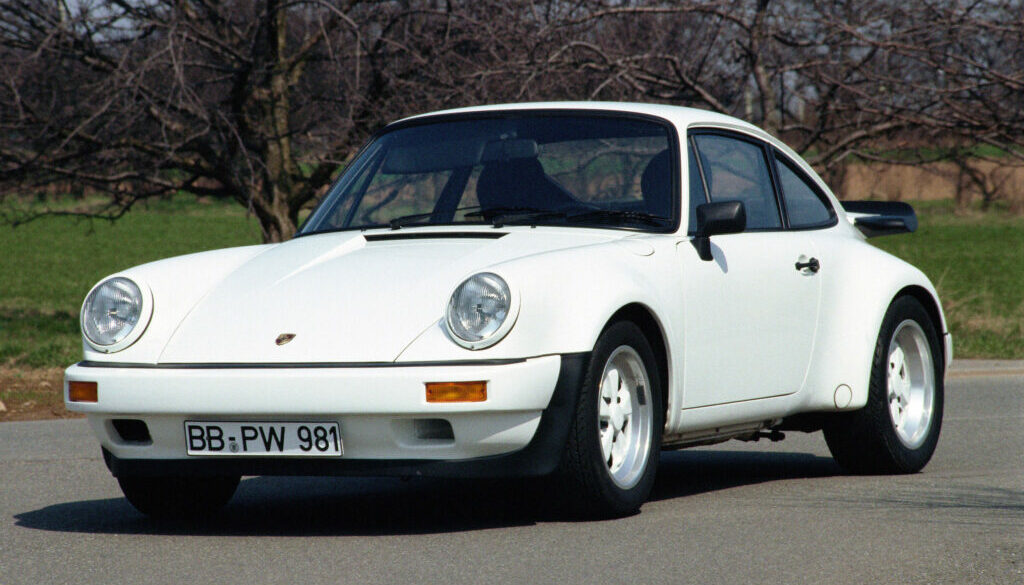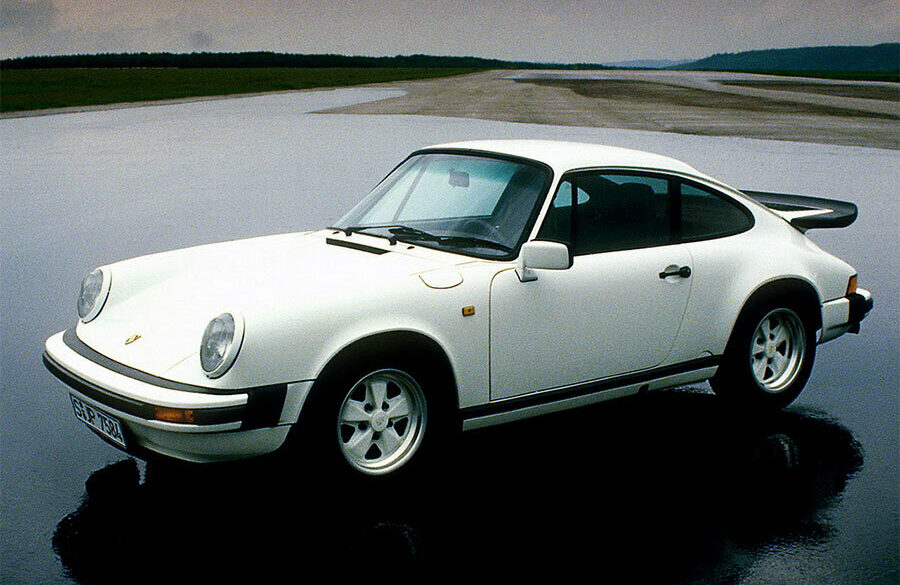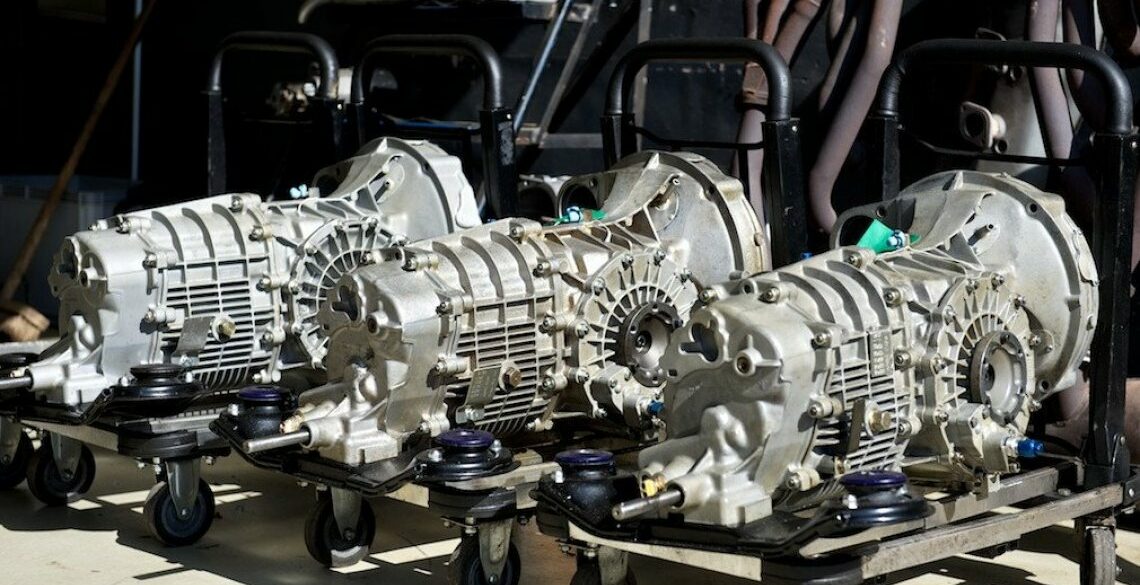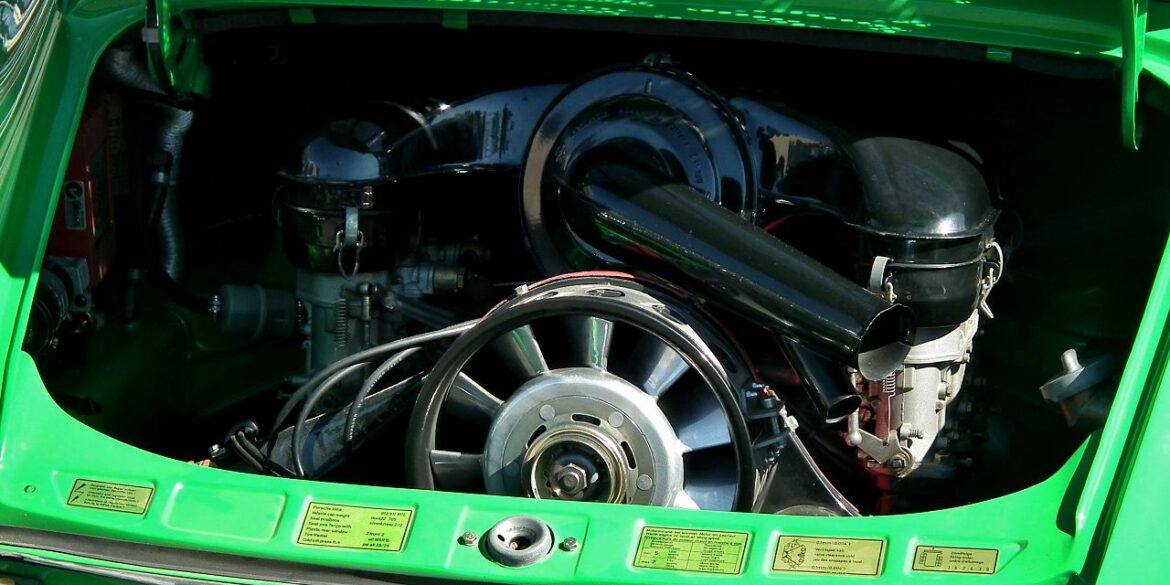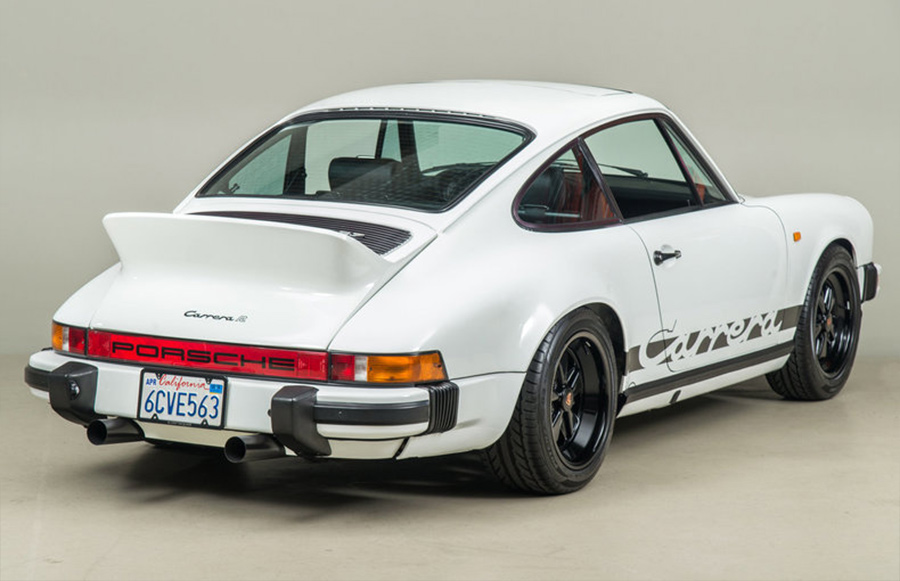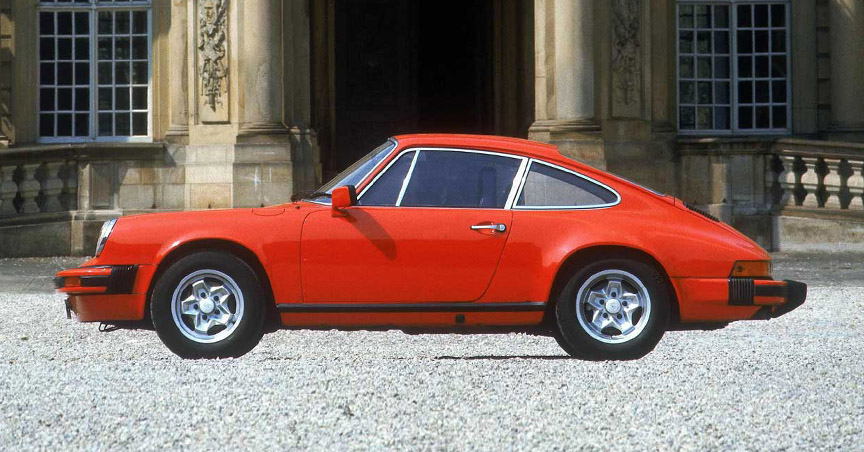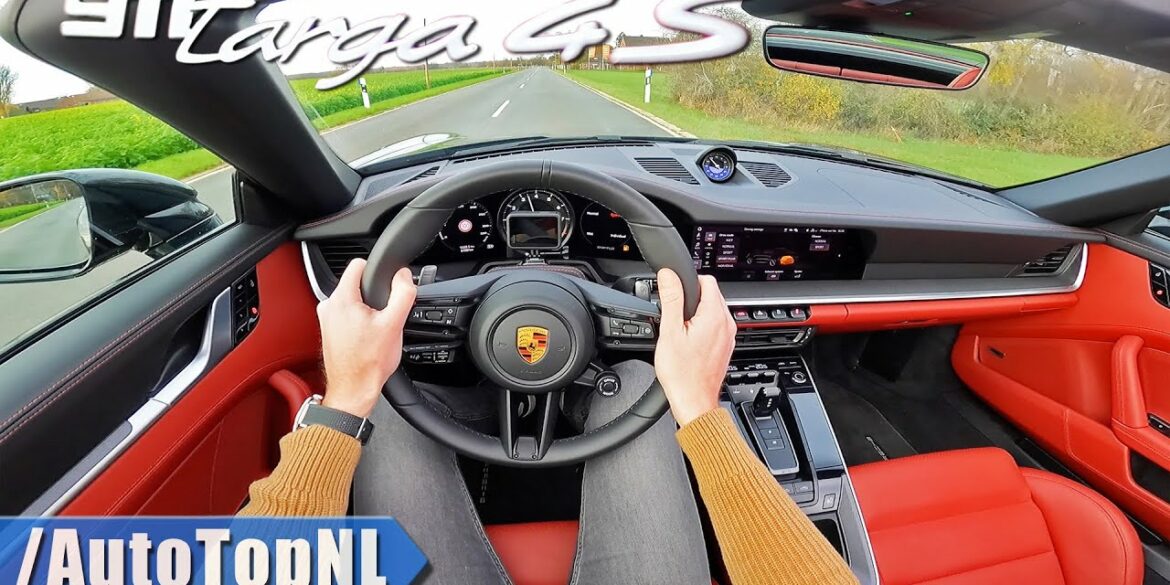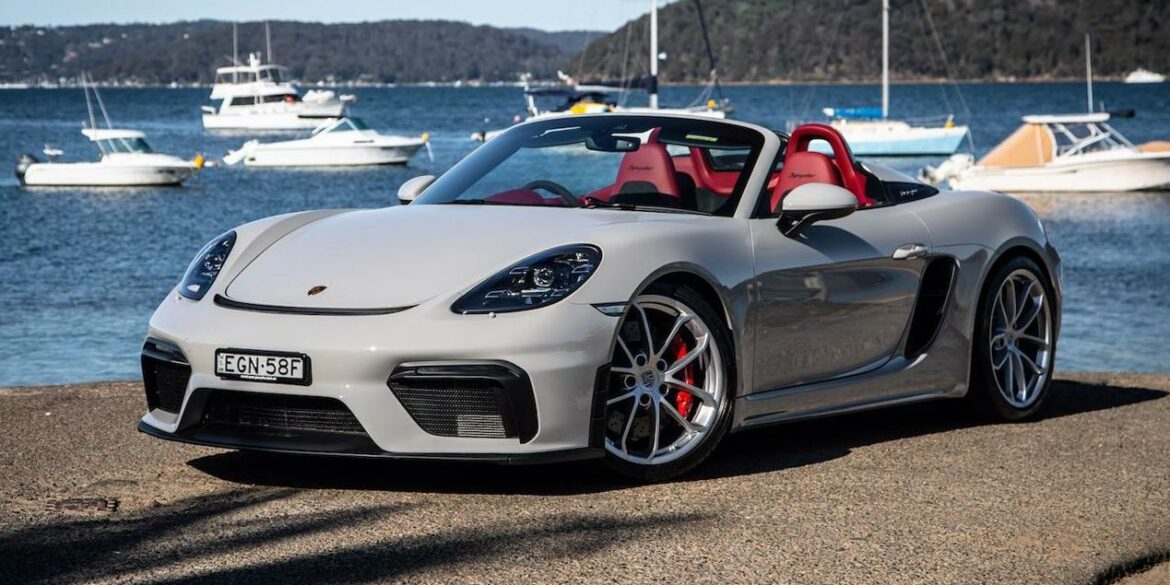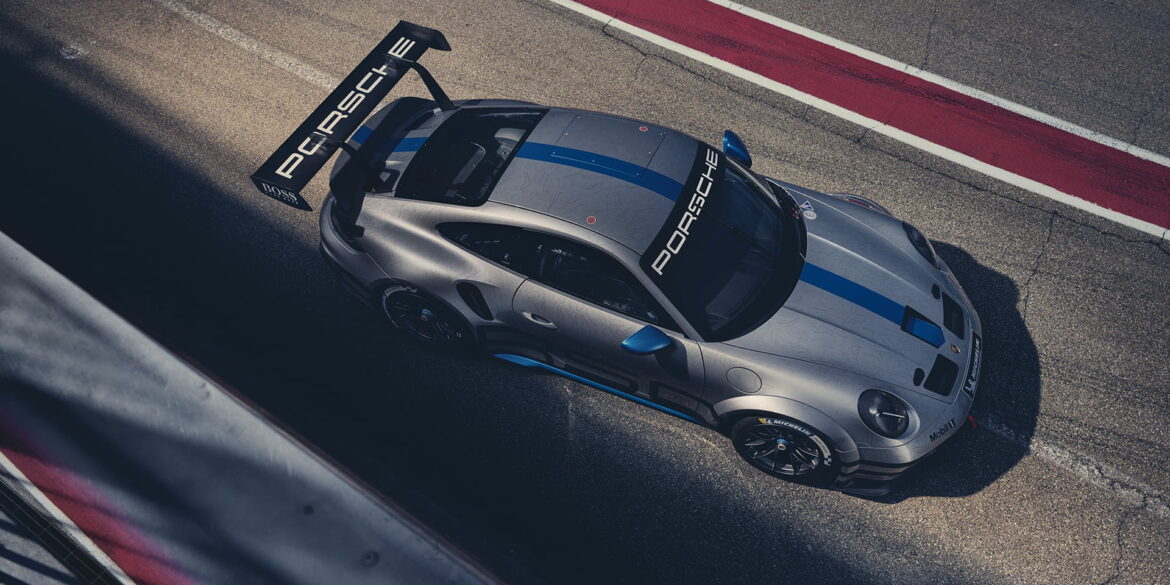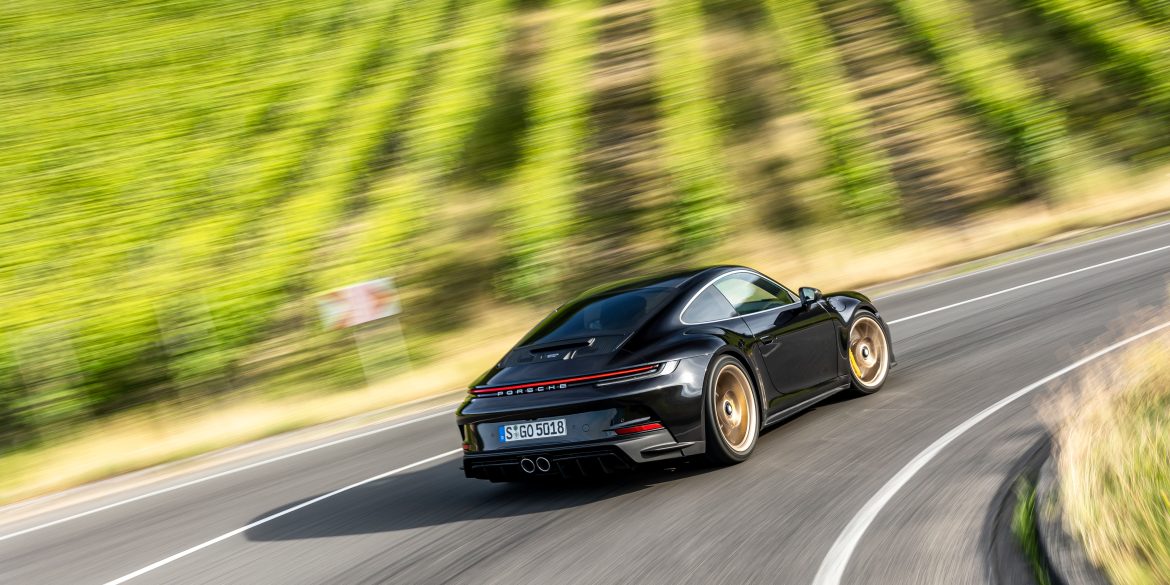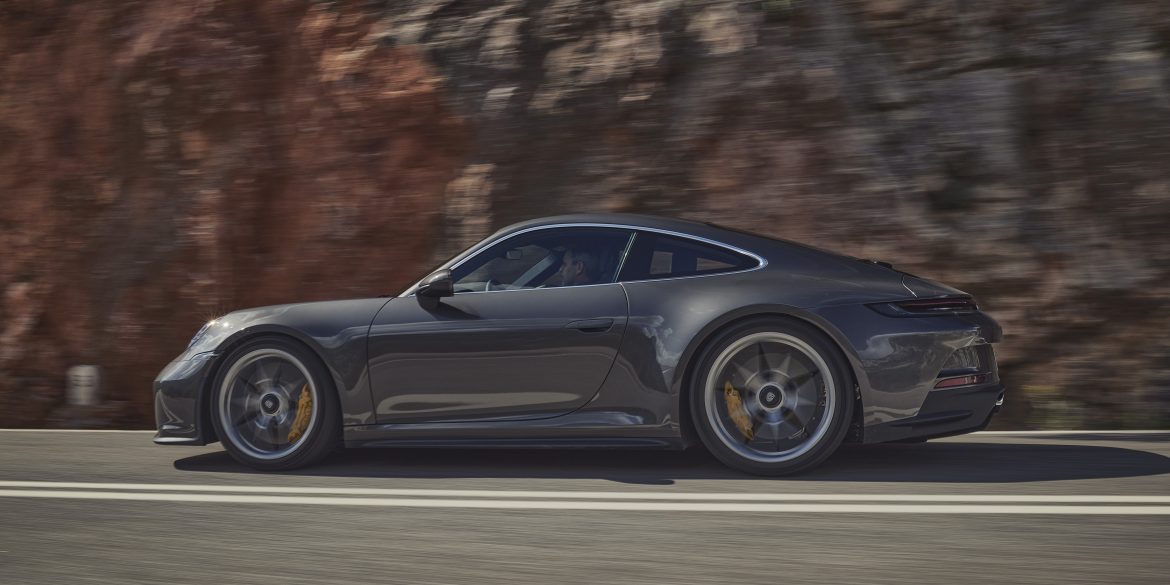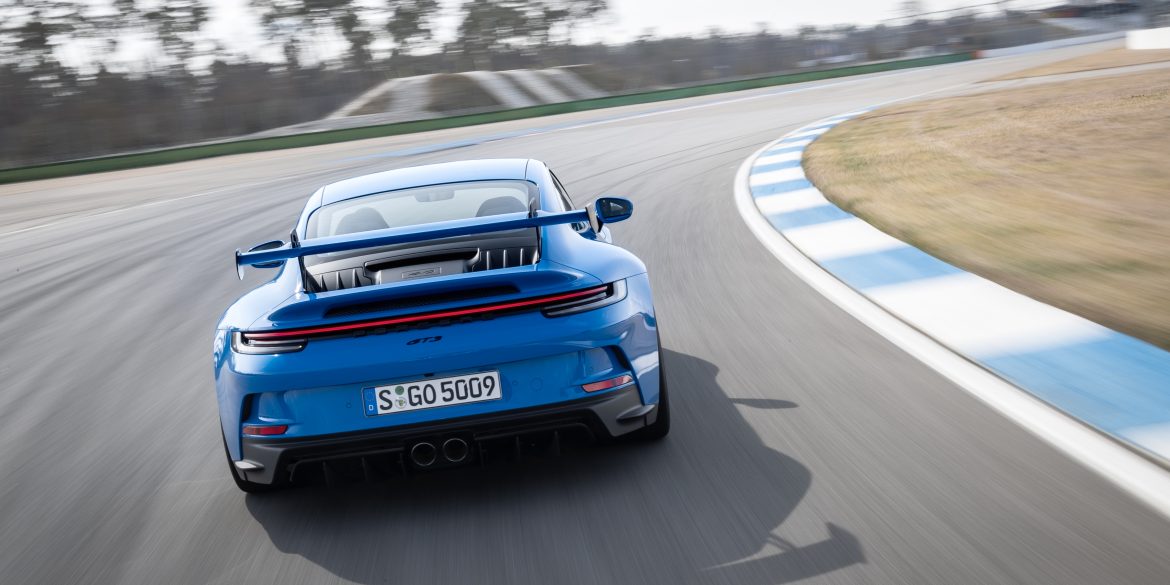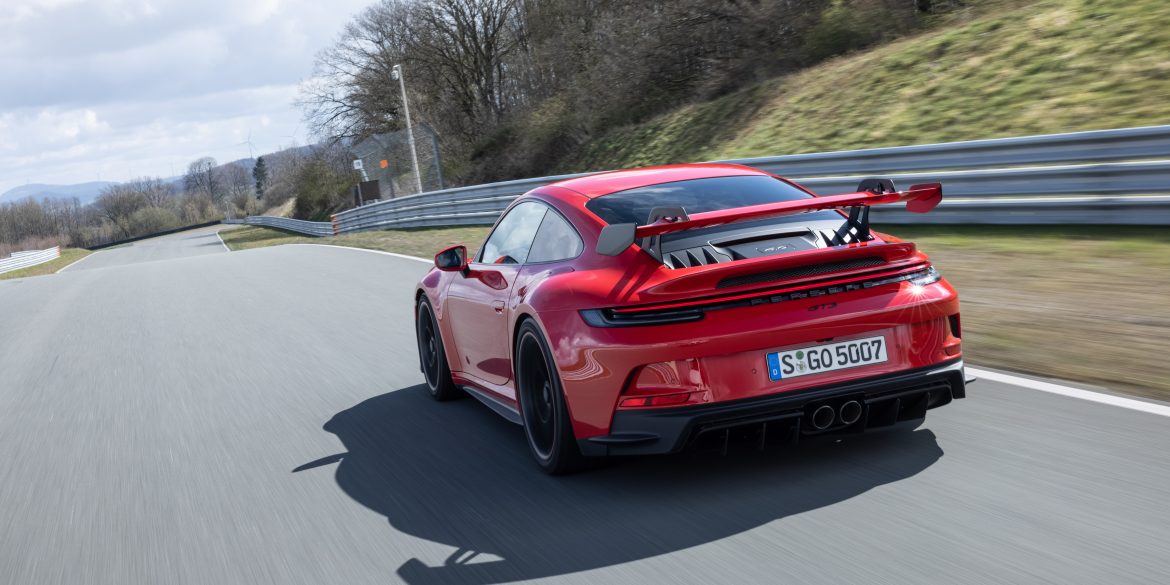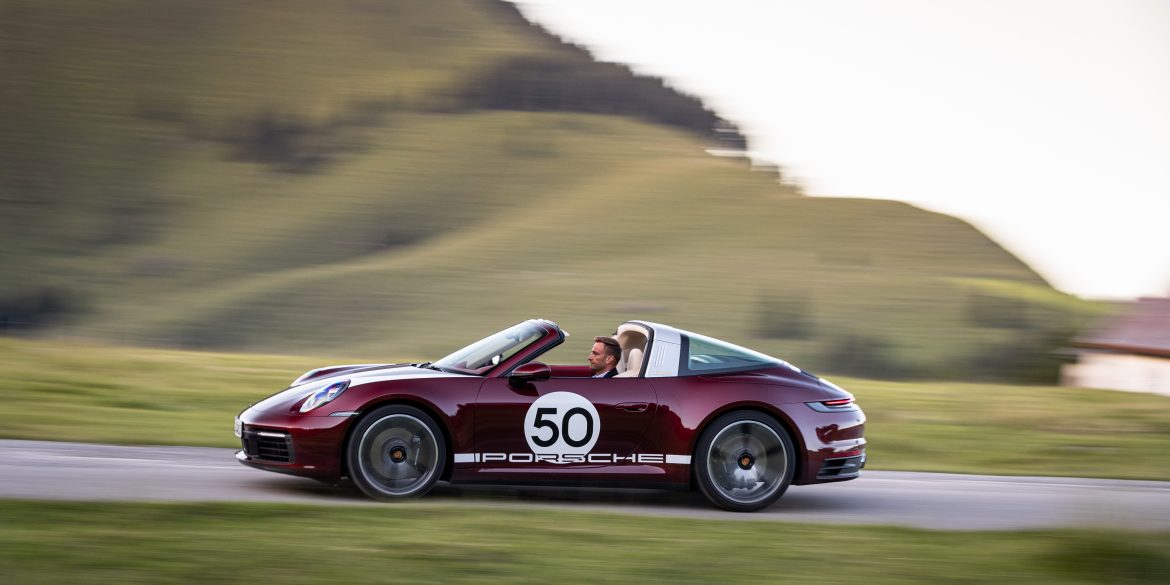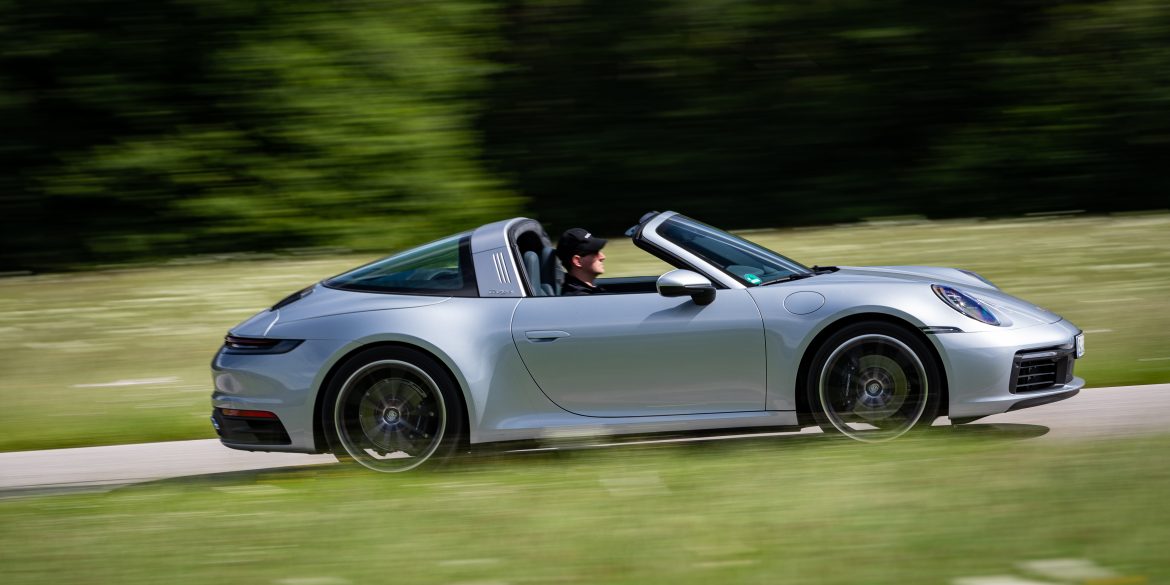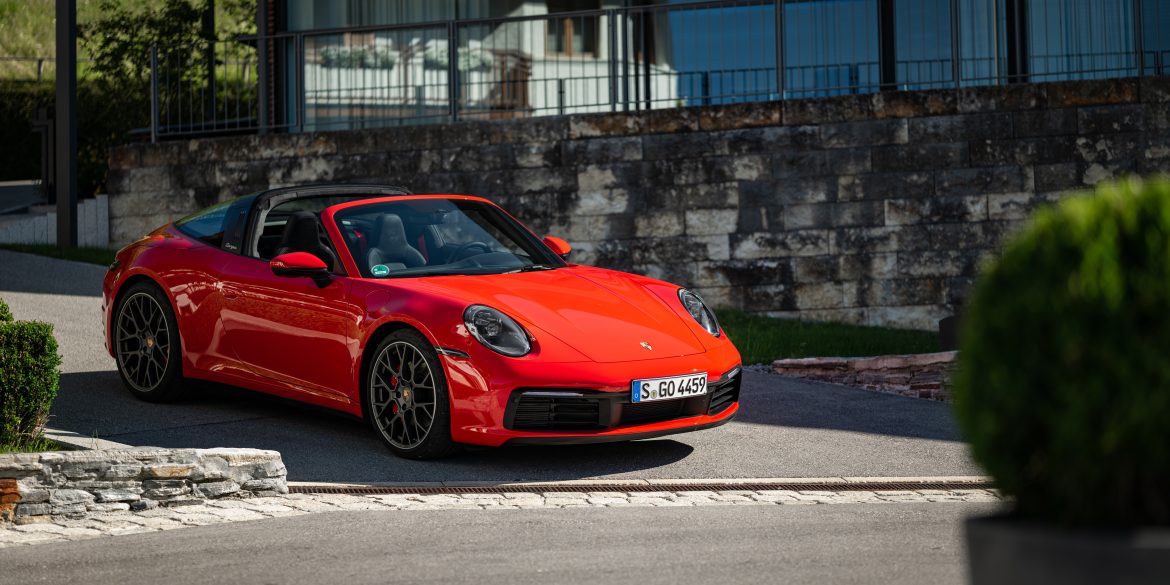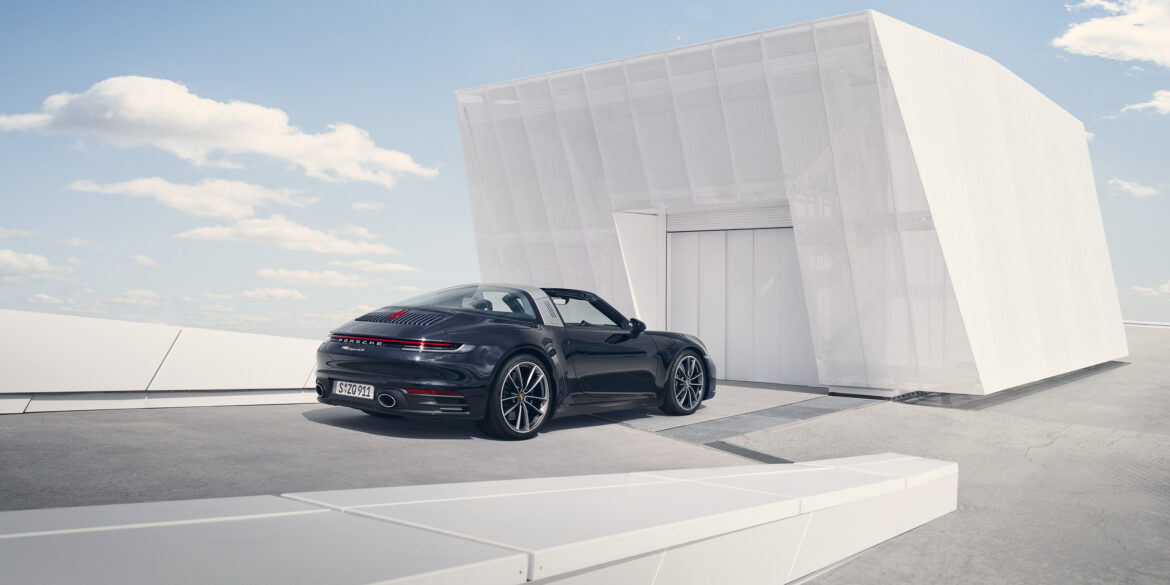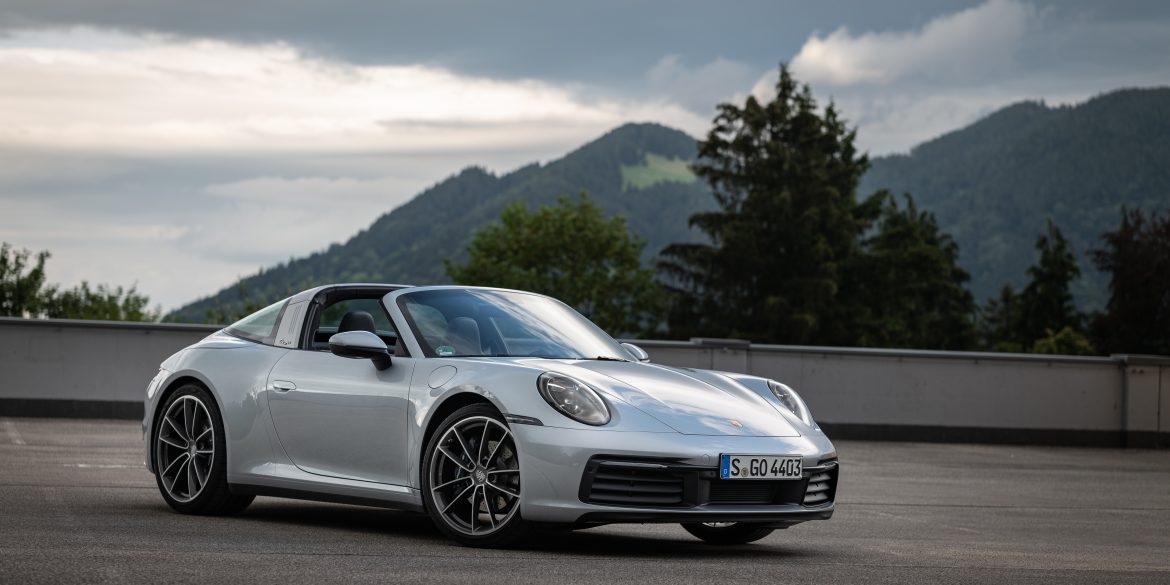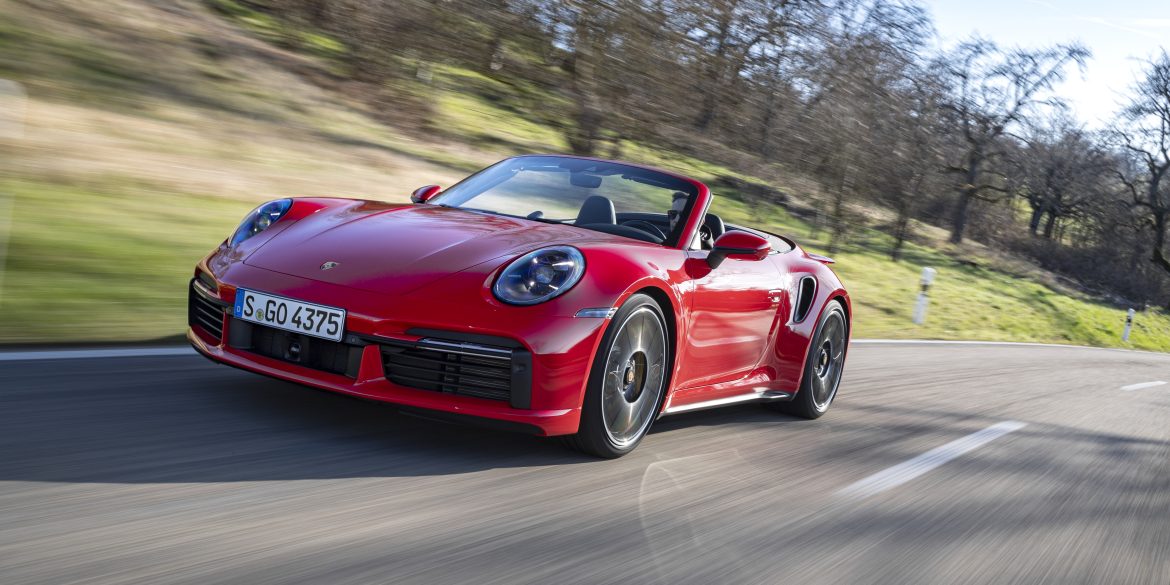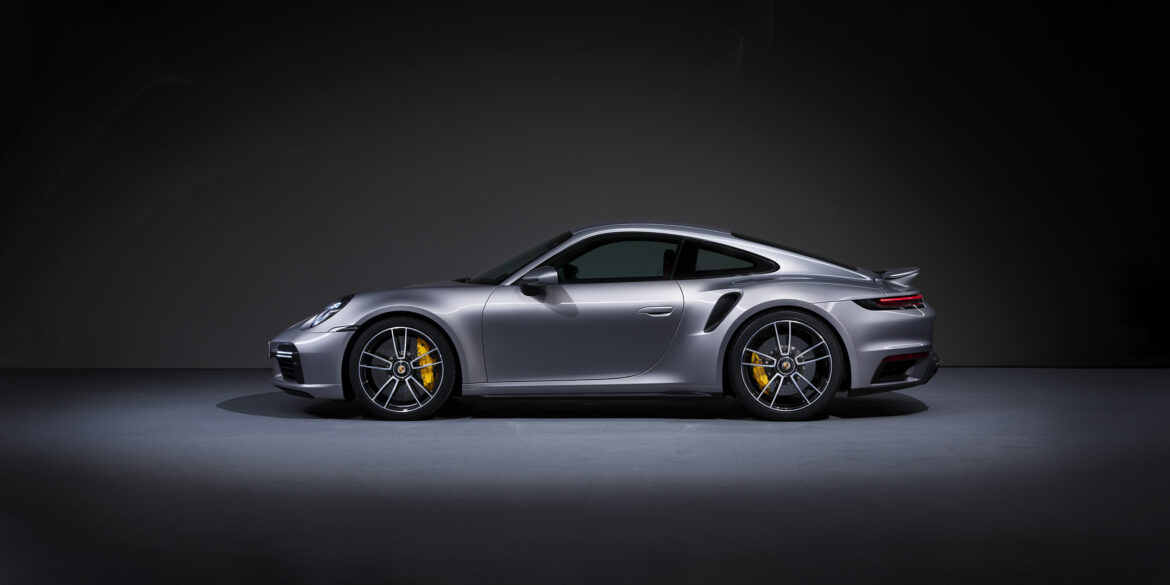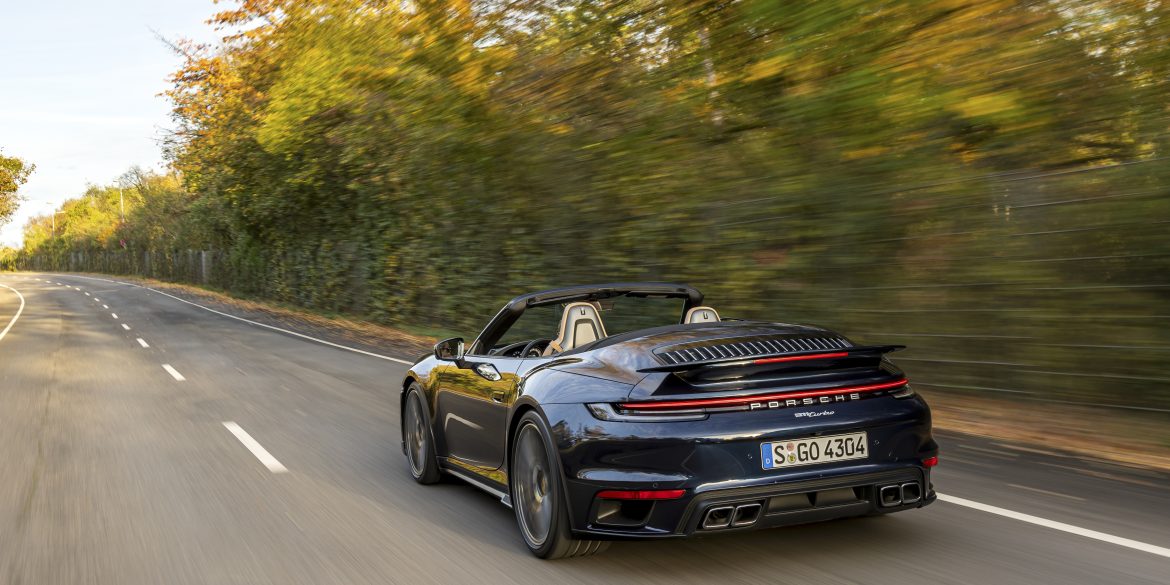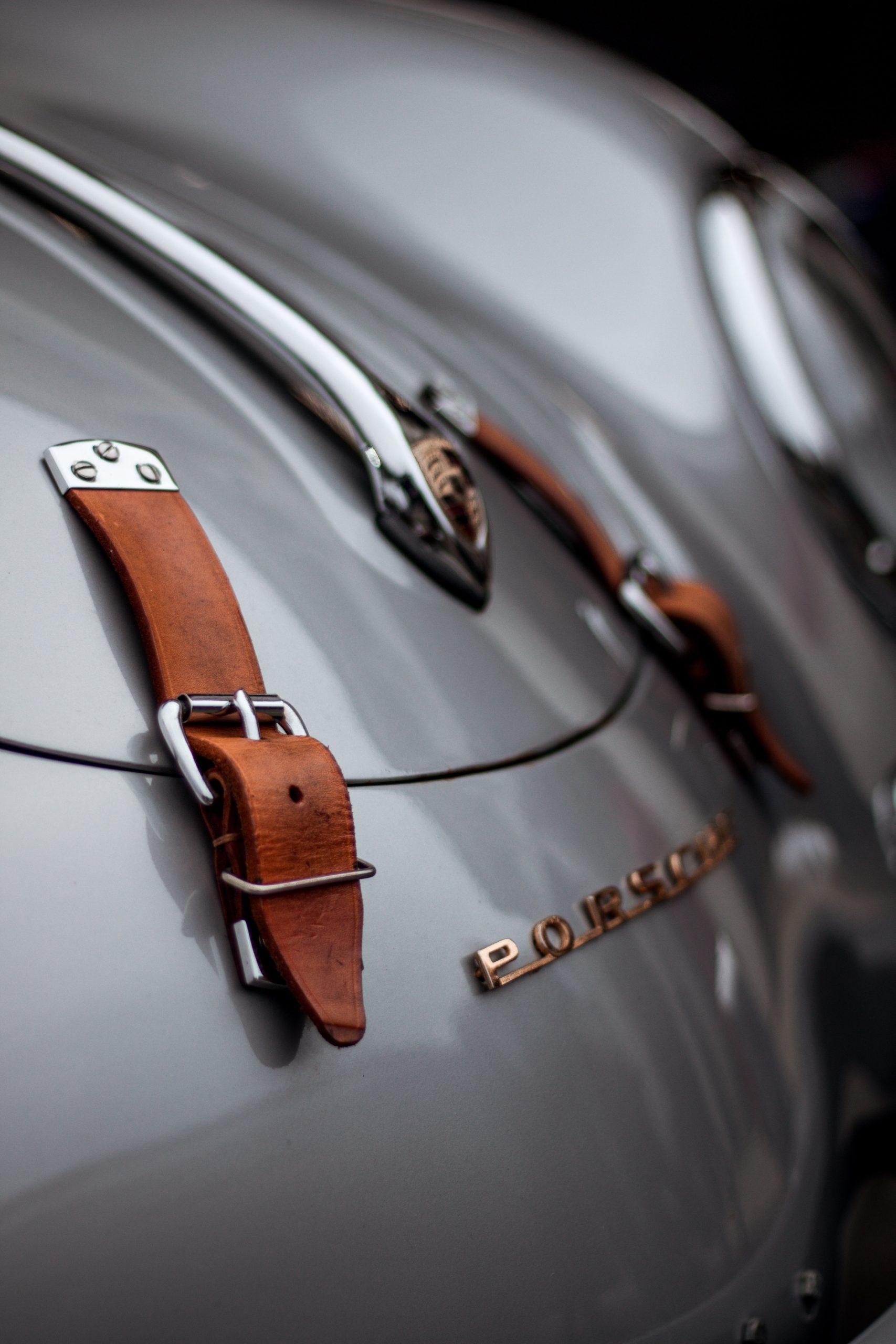Porsche 911 (F-Series) Transmission Codes The transmission number code is found on the transmission data plate. Transmission Codes 911 2.0 and 912 Model MY1965 MY1966 MY1967 MY1968 MY1969 912 4-speed 902.0 4-speed 902.0 4-speed 902.01, 5-speed 902.02 4-speed 902.04, 5-speed 902.05, 902.06 911 T 4-speed 901.10, 4-speed Sportomatic 905.01 4-speed...
JoinedMay 4, 2021
Articles3,519
Comments2
I am an Aussie boy, born and raised in Sydney who has now been living in my adopted hometown of New York since 2004. I never say NO to beer or pizza and love my wife and our three little boys. I'm an obsessed car nutcase. I talk about cars all day long. I have been into Porsches, Ferraris and every other cool carmaker since as far back as I remember. Back in 2013 I partnered up with some friends to acquire and operate some of my favorite automotive sites on the planet and Stuttcars was one of those sites. I hope to be a great steward of the brand.
Singer Vehicle Design Inspiration – Steering Wheel & Dashboard Momo’s Prototipo steering wheel isn’t flashy, and that’s the appeal according to car owners. The familar shape and feel are known to most die-hards car guys and the perfection makes them a no-brainer, they literall work on any car of any ...
Porsche 911 (1963 – 1973) Story & History F-Body – The 1st Generation Porsche 911 Premiere: 1963 September 12 at the IAA Frankfurt motor show As the Porsche 356 had been for sale for quite some time and considering it takes years for a completely new car to evolve from...
Singer Vehicle Design – Long Island Commission Today, we take a closer look at the Singer Vehicle Designs Long Island Commission. Like other Classic Study cars, the Long Island is built in Singer’s California location. This car was shared with the public in December 2021. The Long Island commission is...
1976 Porsche 912 E Technical Specifications Engine type – Number of cylinders Boxer 4 Engine Code – Fuel type Petrol Fuel System Bosch fuel inj. Coolant Air Engine Alignment Longitudinal Engine size – Displacement – Engine capacity 1971 cm3 or 120.3 cu-in Bore x Stroke 94.00 x 71.00 mm, 3.7...
1976 Porsche 912 E Pictures & Gallery...
Also produced for the 1976 "model year", for the U.S. market, was the 912E, a 4-cylinder version of the 911 like the 912 that had last been produced in 1969. It used the I-series chassis and the 2.0 Volkswagen engine from the Porsche 914. In all, 2092 units were produced. In 1976, the Porsche 924 took this car's place for the 1977 "model year" and beyond. The power was supplied by a 4-cylinder high-performance fuel injection motor also used in the Volkswagen 411.
Carfection Takes the 718 Cayman GT4 Out on Track Henry Catchpole heads to the Knockhill Racing Circuit in Scotland to review the new Porsche 718 Cayman GT4 on track....
Porsche 968 Clubsport Video The Porsche 968 Clubsport is a rare and unusual car — and it’s unknown to most people, even Porsche enthusiasts. Today I’m reviewing the 968 Clubsport, and I’m going to show you all around the “GT3” version of the Porsche 968. I’m also going to drive...
1998 Porsche 911 GT1 ’98 Straßenversion Technical Specifications Model 911 GT1 Strassenversion Year 1998 Engine 6-cylinder boxer, water-cooled, aluminium engine block and cylinder heads, 2 intake and 2 discharge valves per cylinder, 2 exhaust gas turbo chargers with air restrictors, 2 charce air intercoolers, dry sump lubrication, electronic engine management...
1997 Porsche 911 GT1 Straßenversion Technical Specifications Price $ $ 1.5 million DM Engine All Aluminum, Water Cooled, Twin KKK Turbo Flat-6 Position Mid Longitudinal Aspiration Twin KKK Turbochargers w/Intercooler Valvetrain DOHC 4 Valves per Cyl Fuel Feed Multipoint Sequential Fuel Injection Displacement 3164 cc / 193.1 in³ Bore 95...
1996 Porsche 911 GT1 Straßenversion Technical Specifications Type Concept / Prototype Car Built At Germany Production 2 Engine All Aluminum, Water Cooled, Twin KKK Turbo Flat-6 Position Mid Longitudinal Aspiration Twin KKK Turbochargers w/Intercooler Valvetrain DOHC 4 Valves per Cyl Fuel Feed Multipoint Sequential Fuel Injection Displacement 3164 cc /...
1998 Porsche 911 GT1 ’98 Technical Specifications GT1/98 race car specifications – chassis #003 Engine 6-cylinder boxer, water-cooled, aluminium engine block and cylinder heads, 2 intake and 2 discharge valves per cylinder, 2 exhaust gas turbo chargers with air restrictors, 2 charce air intercoolers, dry sump lubrication, electronic engine management...
1997 Porsche 911 GT1 Evolution Technical Specifications Engine: Water-cooled six-cylinder four-stroke horizontally opposed engine, two turbochargers, two controlled metal-substrate catalytic converters, dual ignition, four valves per cylinder, mechanical valve adjustment, dry sump lubrication Engine Twin Turbo Flat-6 Position Mid, Longitudinal Aspiration Twin KKK Turbochargers Valvetrain 4 Valves / Cyl Fuel...
1996 Porsche 911 GT1 Technical Specifications Technical specifications (as at 28 April 1996) Engine: 6 cylinder boxer, aluminium-engine block and cylinder heads, water cooled block and head, 2 intake and 2 discharge valves per cylinder, 2 exhaust gas turbo chargers, rigid bucket tappet with valve play compensation, dry sump lubrication,...
Straight exhaust fly-by’s & downshifts Is there anything better than watching (and listening) to an aircooled RSR 3.0 hammering on a track? Nope, didn’t think so....
Carrera RSR Turbo On Track Fun At this year’s Historic Grand Prix I was lucky enough to capture this 1974 Porsche 911 Carrera RSR. Its incredibly wide rear end is one of the characteristics that makes this car such an iconic 70s racer. The sound of the turbo spooling up...
Porsche 911 (G-Body) Sales & Production Numbers (1974 – 1989) ...
Porsche 911 (G, H, I & J) Technical Specifications & Model Comparison (European Variants) Comparison: European specs 911 MY1974-1977 Comparison: European specs 911 MY1978-1983 Comparison: European specs 911 MY1984-1989 ...
1974 – 1977 Porsche 911 2.7 Targa Pictures & Gallery...
1974 – 1977 Porsche 911 2.7 Coupe Pictures & Gallery...
1974 – 1977 Porsche 911 2.7 Technical Specifications Body Type 2+2 seater fixed-head coupé Number Of Doors 2 Dimensions & Weights Wheelbase 2268 mm / 89.3 inches Track/tread (Front) 1360 mm / 53.5 inches Track/tread (Rear) 1342 mm / 52.8 inches Length 4290 mm / 168.9 inches Width 1610 mm...
1974 – 1977 Porsche 911 S 2.7 Targa Pictures & Gallery...
1974 – 1977 Porsche 911 S 2.7 Coupe Pictures & Gallery...
1974 – 1977 Porsche 911 S 2.7 Technical Specifications Body Type 2+2 seater fixed-head coupé Number Of Doors 2 Wheelbase 2268 mm / 89.3 inches Track/tread (Front) 1371 mm / 54 inches Track/tread (Rear) 1359 mm / 53.5 inches Length 4290 mm / 168.9 inches Width 1610 mm / 63.4...
Porsche made its first and most significant changes to the 930 for 1978 model year, enlarging the engine bore by 2 mm (0.08 in) to a total displacement of 3,299 cc (3.3 L; 201.3 cu in) and adding an air-to-air intercooler. The suspension benefitted from new anti-roll bars, firmer shocks and larger diameter rear torsion bars. While the increase in displacement increased power output and torque, it also increased the weight of the vehicle, which contributed to a substantial change in the handling and character of the car compared to the Earlier 3.0-Litre Models.
The 911 Turbo was put into production in 1975. While the original purpose of the 911 Turbo was to gain homologation for the 1976 racing season, it quickly became popular among car enthusiasts. Ernst Fuhrmann adapted the turbo-technology originally developed for the 917/30 CAN-AM car and applied it to the 3.0 litre flat-six used in the Carrera RS 3.0, thus creating what Porsche internally dubbed as the 930. Total power output from the engine was 260 bhp and 254 ft lbs of torque.
The replacement for the SC series came in 1984 as the 911 3.2 Carrera, reviving the Carrera name for the first time since 1977. This was the last iteration in the original 911 series, with all subsequent models featuring new body styling and new brake, electronic, and suspension technologies. Almost the same galvanised body as the SC. Engine was claimed to be 80 per cent new, and the first production 911 to feature an ECU to control the ignition and fuel systems.
The 911 SC effectively replaced the 911 S and was one of Porsche's first models that was meant for the international market. It was sold as a cheaper alternative to the 911 Turbo. The SC used an unblown version the 930 Turbo unit that offered 180 to 200 bhp depending on model year. Options included the rear whale tail, front chin spoiler, Bilstein dampers, 16 inch wheels with Pirelli P7 tires and sports seats. Sometimes dealers lumped these options together to create their own sport package. It was available as a Coupe and Targa from 1978 - 1983, while the Cabriolet version was only available in 1983.
1974 – 1976 Porsche 911 Carrera MFI Technical Specifications Production Years 1974 – 1976 Built At Stutgart, Germany Production 1647 Engine Air-Cooled Flat 6 w/Dry Sump Lubrication Position Rear, Longitudinal Aspiration Natural Valvetrain SOHC Fuel Feed Bosch Mechanical Fuel Injection. Displacement 2687 cc / 164.0 in³ Bore 90 mm /...
1974 – 1976 Porsche 911 Carrera 2.7 (MFI) Targa Pictures & Gallery...
1974 – 1976 Porsche 911 Carrera Coupe (MFI) Pictures & Gallery...
1974 – 1975 Porsche 911 Carrera 2.7 Targa Pictures & Gallery...
1974 – 1975 Porsche 911 Carrera Coupe Pictures & Gallery...
1974 – 1975 Porsche 911 Carrera Technical Specifications Production Years 1974 – 1975 Built At Stuttgart, Germany Price $ $13,575 Engine Flat 6 Valvetrain SOHC Displacement 2687 cc / 164.0 in³ Bore 90.0 mm / 3.54 in Stroke 70.4 mm / 2.77 in Compression 8.5:1 Power 124.5 kw / 167.0...
1974 Porsche 911 Carrera RS 3.0 Pictures & Gallery...
1974 Porsche 911 Carrera RS 3.0 Technical Specifications Engine 3.0L Aircooled Flat 6 Configuration Flat-6 Driven wheels Rear Engine / RWD Location Rear, longitudinally mounted Construction magnesium alloy block and head Displacement 2,993 cc / 182.6 cu in Bore / Stroke 95.0 mm (3.7 in) / 70.4 mm (2.8 in) Compression...
1976 – 1977 Porsche 911 Carrera 3.0 Technical Specifications Type 2+2 FHC Number of doors 2 Engine 3.0 L Aircooled Flat 6 Engine Position Rear Engine Layout Longitudinal Drive Wheels Rear wheel drive Layout Flat 6 Type Dry sumped, SOHC, 2 valves per cylinder Main bearings 8 Bore x stroke...
As a successor to the Carrera 2.7 MFI, the Carrera 3.0 was fitted with a variation of the 930's engine without a Turbo. During its production period only 3,687 cars were made. The Carrera 3.0 was replaced by the Porsche 911 SC for model year 1978. Between 1976 and 1977, Porsche introduced the Carrera 3.0 with wide rear flares, optional whale-tail, and other luxury options. Built before the ‘911 SC’ it has everything the SC has, and more. It’s a different drive with more power @200bhp; more torque @188 ft/lb @4200rpm and it was 10% lighter too.
1976-1977 Porsche 911 Carrera 3.0 Targa Pictures & Gallery...
1976-1977 Porsche 911 Carrera 3.0 Coupe Pictures & Gallery ...
1978-1983 Porsche 911 SC Targa Pictures & Gallery ...
1983 Porsche 911 SC Cabriolet Pictures & Gallery ...
1978-1983 Porsche 911 SC Coupe Pictures & Gallery...
1978 – 1983 Porsche 911 SC Targa Technical Specifications Type Series Production Car Built At Stuttgart, Germany Price $ $34,450 Engine Air-Cooled Flat-6 Position Rear, Longitudinal Aspiration Natural Fuel Feed Bosch K-Jetronic Electronic Injection Displacement 2994 cc / 182.7 in³ Bore 95 mm / 3.74 in Stroke 70.4 mm /...
1983 Porsche 911 SC Cabriolet Technical Specifications Type Series Production Car Production Years 1978 – 1983 Built At Stuttgart, Germany Price $ $25,900 Engine Flat 6 Valvetrain SOHC Displacement 2994 cc / 182.7 in³ Bore 95.0 mm / 3.74 in Stroke 70.4 mm / 2.77 in Compression 9.3:1 Power 128.3...
1978 – 1983 Porsche 911 SC Coupe Technical Specifications Type Series Production Car Production Years 1978 – 1983 Built At Stuttgart, Germany Price $ $17,950 Engine 930/03 Flat 6 Position Rear Longitudinal Aspiration Natural Valvetrain SOHC Displacement 2994 cc / 182.7 in³ Bore 95.0 mm / 3.74 in Stroke 70.4 mm...
1984-1989 Porsche 911 Carrera 3.2 Targa Pictures & Gallery...
1984-1989 Porsche 911 Carrera 3.2 Cabriolet Pictures & Gallery...
1984 – 1989 Porsche 911 Carrera 3.2 Technical Specifications USA-Market Cars Engine USA (1984 – 1986) USA (1987 – 1989) Type Flat 6 Flat 6 Induction Normally-aspirated Normally-aspirated Cooling Air/oil-cooled Air/oil-cooled Valvetrain Single overhead camshaft Single overhead camshaft Injection Port injection Port injection Bore X Stroke 3.74 in/95 mm x...
1984-1989 Porsche 911 Carrera 3.2 Coupe Pictures & Gallery ...
There is nothing better Porsche 911 992 GT3 Touring being wrung out on the Autobahn. Lots of hard acceleration runs in the manual GT3 Touring. It sounds like heaven and about the most perfect car on the planet right now....
The Fast EV Wagon of Our Dreams As tends to be the case with Porsche’s driver-focused ‘GTS’ variants, Porsche has successfully applied a combination of options, styling updates, and performance goodies to their Taycan EV in a way that is hard to argue against. It’s got gobs of power, but...
For 1989, Porsche produced the 25th Anniversary Special Edition model to mark the 25th year of 911 production. The 1989 Porsche brochure lists production of 500 U.S. market cars, of which 300 were coupés (240 in silver metallic paint and 60 in satin black metallic), and 200 cabriolet models (160 in silver and 40 in black). All had "silk grey" leather with black accent piping and silk grey velour carpeting. Includes small bronze "25th Anniversary Special Edition" badges.
1978 – 1989 Porsche 911 Turbo 3.3 (930) Technical Specifications Number of cylinders Boxer 6 Engine Code 930/60/66 Fuel type Petrol Fuel System Bosch K-Jetronic Engine Position Rear Displacement 3299 cc or 201.3 cu-in Bore x Stroke 97.0 x 74.4 mm Stroke 3.82 x 2.91 inches Number of valves 12...
1975 -1977 Porsche 911 Turbo 3.0 (930) Technical Specifications Type Series Production Car Production Years 1974 – 1979 Built At Stuttgart, Germany Engine Air-Cooled Flat-6 w/Dry Sump Lubrication Position Rear Longitudinal Aspiration KKK Turbocharger Valvetrain SOHC, 2 Valves per Cyl Fuel Feed Bosch K-jetronic Injection Displacement 2993 cc / 182.6...
1981-1989 Porsche 911 Turbo 3.3 SE ‘Flachbau’ Pictures & Gallery ...
1987 -1989 Porsche 911 Turbo 3.3 SE ‘Flachbau’ Technical Specifications Type Series Production Car Built At Stuttgart, Germany Production 800 Engine Turbocharged Flat-6 Position Rear Longitudinal Aspiration KKK Turbocharger Valvetrain SOHC, 2 Valves per Cyl Fuel Feed Bosch K-Jetronic Injection Displacement 3299 cc / 201.3 in³ Bore 97.0 mm /...
1989 Porsche 911 Turbo LE Pictures & Gallery...
1974 – 1975 Porsche 911 Carrera RSR 3.0 Pictures & Gallery ...
1974 -1975 Porsche 911 Carrera RSR 3.0 Technical Specifications Engine Configuration 911/75 B6 Location Rear, longitudinally mounted Construction magnesium alloy block and head Displacement 2,996 cc / 182.8 cu in Bore / Stroke 95.0 mm (3.7 in) / 70.4 mm (2.8 in) Compression 10.5:1 Valvetrain 2 valves / cylinder, SOHC...
1974 Porsche 911 Carrera RSR Turbo 2.1 Technical Specifications Engine Location Rear Drive Type Rear Wheel Body / Chassis Monocoque chassis and Fiberglass body Model Years 1974 Weight 1808 lbs / 820.095 kg Engine Turbocharged Flat 6 | 911/76 B6 Displacement 2142 cc / 130.7 cu in. / 2.1 Liters...
1989 Porsche 911 Turbo Limited Edition (911) Technical Specifications Engine Flat 6 Position Rear Longitudinal Aspiration Natural Fuel Feed Bosch K-Jetronic Injection Displacement 3299 cc / 201.3 in³ Bore 97 mm / 3.82 in Stroke 74.4 mm / 2.93 in Compression 5750:1 Power 246.1 kw / 330 bhp @ 5750...
1989 Porsche 911 3.2 Speedster (911) Technical Specifications Price $ USD $65,480 Engine Air-cooled Flat-6 Valvetrain SOHC Displacement 3164 cc / 193.1 in³ Bore 87.0 mm / 3.43 in Stroke 75.0 mm / 2.95 in Compression 10.3:1 Power 172.3 kw / 231.1 bhp @ 5900 rpm Specific Output 73.04 bhp...
1984 Porsche 911 SC RS (911) Technical Specifications Model 911 SC/RS – Type 954 Year 1984 Engine 6-cylinder, horizontally opposed (Type 930/18) Capacity 2994 cc Bore x stroke 95.0 x 70.4 mm Compression ratio 10.3:1 Fuel delivery Bosch/Kugelfischer fuel injection Power 255 bhp @ 7000 rpm Maximum torque 250 Nm...
1987 – 1989 Porsche 911 Carrera 3.2 Clubsport (911) Technical Specifications Model 3.2 Clubsport Year 1987 – 1989 Price When New $45,895 USD Production Numbers 340 Driven Wheels Rear Engine / RWD Engine & Specs 3.2 L Aircooled Flat 6 Displacement 3,164cc Engine Flat 6 Valvetrain SOHC Displacement 3164 cc...
Porsche 911 (G-Series) Transmission Codes The transmission number code is found on the transmission data plate. Transmission codes 911/912 G-model MY1974-1977 Model MY1974 MY1975 MY1976 MY1977 912 E 5-speed 923.05 911 2.7 4-speed 915.16 5-speed 915.06 4-speed Sportomatic 925.02 4-speed 915.48 5-speed 915.43 4-speed Sportomatic 925.02 4-speed 915.45, 4-speed 915.49...
It’s great on track but what’s it like to live with on UK roads? Porsche 911 992 GT3 Review!!! We know the Porsche 992 GT3 Clubsport is great on track but what’s it like to live with on our pot-holed UK roads? I spend a week in the latest 911...
Porsche 911 (Early Years & G-Series) Engine Codes By the time the G-Series was release, the standard engine was now 2.7-litres in comparison to 2.4 in the earlier model. 2.7 – 3.0-litre engines had been used earlier, but were reserved for motorsport models. The 154 kW Bosch/Kugelfischer-injected Carrera-engine used in...
1965 – 1989 Porsche VIN Numbers Porsche used a variety of chassis and VIN numbering systems until 1981, when a major change was made to a 17 digit international code which remained current until the end of 911 production. All numbers for cars made between 1965 – 1990 are listed...
Porsche 911 (G-Series) (1973 – 1989) Story & History G-Model – The 2nd Generation Porsche 911 Premiere: September 12, 1973 IAA Frankfurt Starting with the model year 1968, Porsche internally assigned a letter to each model year – MY1968 was “A”, MY1969 was “B” and so on. Model year 1974...
Doug DeMuro Reviews the new GT3 Porsche 911 992 GT3 Review!!! Today I’m reviewing the new 992 GT3, and I’ll show you all around it. First I’ll show you all the quirks and features of the new GT3, and I’ll show you all the cool new things on the latest...
Is it the sweet spot in the 911 range? Watch our first drive review of the new 992 Porsche 911 Carrera GTS. Here, James Dennison covers all the key aspects of the new 911 Carrera GTS and asks whether it works out as the sweet spot in the 911 range....
Hard Acceleration and Top Speed Run Another great acceleration and top speed run by the AutoTopNL team. This time in a 992 Targa 4S....
…And the winner is… It’s time for another carwow drag race! This week, the all-electric Tesla Model 3 Performance is going against a born-and-bred supercar – the Porsche 911 (992) Carrera S! Victory seems almost certain for the 911, which goes from 0-60mph in just 3.5 seconds and is powered...
2021 Porsche 718 Boxster Spyder (982) Technical Specifications Model & Pricing Info Make Porsche Model 718 Cayman GT4 / 718 Spyder Boxster Generation 982 Car type Coupe / Convertible Category Limited Series Production Car Built At Stuttgart, Zuffenhausen, Germany Introduced 2019 Base Price (USD) $100,550 / $97,650 Chassis, Suspension &...
Which Porsche 911 Would You Choose? Which of the two most potent Porsche 911s on sale is quickest around a track? Steve Sutcliffe straps himself in for this track battle to find out. The Porsche 911 GT3 and Turbo S are two very different interpretations of a fast 911. The...
Car Magazine Reviews the 911 Turbo S Watch our review of the Porsche 911 Turbo S, where we answer the question of whether it’s still relevant in 2021. Turbo’d Porsches are everywhere and the electric Taycan has taken the brand into a brave new world, but what does this mean...
The Ultimate 911 Showdown With the right approach, finesse can be just as effective as brute force. They are two ends of the same spectrum. Two vastly different ways of solving the same problem. But in the sibling rivalry between the 992 Porsche 911 Turbo S and the 992 Porsche...
2021 – Present Porsche 911 GT3 Cup (992) Pictures & Gallery ...
Current Porsche 911 GT3 Cup (992) Technical Specifications Concept Single-seater customer race car Engine Water-cooled six-cylinder boxer engine Displacement 3,996cm³; stroke 81.5mm; bore 102mm Max. power: 375kW (510PS) at 8,400rpm Max. torque: 470Nm at 6,150rpm Max. rpm: 8,750rpm Single throttle butterfly system Intake manifold with two resonance flaps Dry-sump lubrication...
The Porsche Mobil 1 Supercup features the Porsche 911 GT3 Cup, the world’s best-selling race car. For this season, it’s the new generation. 510 hp, optimised intake manifold, electronic gearshift and power steering, fully digital cockpit, larger rear wing, and a double-wishbone front axle. This is a meaningfully upgraded race car. The new 911 GT3 Cup is taking on a great legacy. And it has already proven itself!
Head to Head – Which is Better? The new 659hp GT Speed is probably the best super-GT Bentley has ever made. But is it good enough to outpoint the 650hp Porsche 911 Turbo S – arguably the most capable all-weather sports car currently on sale.....
Porsche Taycan GTS on Street & Track Steve Sutcliffe tests the 2021 Porsche Taycan GTS and GTS Sport Turismo on road and track. The electric driver’s car is here, but how good is it?...
Two of our favorites duke it out...
2022 Porsche 911 GT3 Touring (992) Technical Specifications Type Aluminium horizontally opposed and naturally aspirated engine Cylinders 6 Displacement 3,996 cm³ Maximum power (DIN) at rpm 500 bhp @ 8,250 rpm Maximum torque at rpm 338 ft lbs @ 6,000 rpm Maximum engine speed 9,000 rpm Drive Rear-wheel drive Porsche...
2022 – Present Porsche 911 GT3 with Touring-Package (992) Pictures & Gallery ...
2022 – Present Porsche 911 GT3 (992) Pictures & Gallery ...
2022 Porsche 911 GT3 (992) Technical Specifications Type Aluminium horizontally opposed and naturally aspirated engine Cylinders 6 Displacement 3,996 cm³ Maximum power (DIN) at rpm 500 bhp @ 8,250 rpm Maximum torque at rpm 338 ft lbs @ 6,000 rpm Maximum engine speed 9,000 rpm Drive Rear-wheel drive Porsche Doppelkupplung (PDK)...
2021 Porsche 911 Targa 4S Heritage Design Edition (992) Technical Specifications Model 911 Targa 4S Design and cylinders Twin-turbocharged boxer 6 Bore 91.0 mm Stroke 76.4 mm Displacement 2,981 cc Max. power 443 hp Max. power at rpm 443 bhp @ 6500 rpm Max. engine speed 7,500 rpm Max. torque...
2021 Porsche 911 Targa 4S Heritage Design Edition (992) Pictures & Gallery ...
2021 – Present Porsche 911 Targa 4S (992) Pictures & Gallery...
2021 – Present Porsche 911 Targa 4 (992) Pictures & Gallery...
2022 Porsche 911 Targa 4S (992) Technical Specifications Model 911 Targa 4S Design and cylinders Twin-turbocharged boxer 6 Bore 91.0 mm Stroke 76.4 mm Displacement 2,981 cc Max. power 443 hp Max. power at rpm 443 bhp @ 6500 rpm Max. engine speed 7,500 rpm Max. torque (PDK (Automatic)) 390...
2021 Porsche 911 Targa 4S (992) Technical Specifications Model 911 Targa 4S Design and cylinders Twin-turbocharged boxer 6 Bore 91.0 mm Stroke 76.4 mm Displacement 2,981 cc Max. power 443 hp Max. power at rpm 443 bhp @ 6500 rpm Max. engine speed 7,500 rpm Max. torque (PDK (Automatic)) 390...
2022 Porsche 911 Targa 4 (992) Technical Specifications Model 911 Targa 4 Design and cylinders Twin-turbocharged boxer 6 Bore 91.0 mm Stroke 76.4 mm Displacement 2,981 cc Max. power 379 hp Max. power at rpm 379 bhp @ 6500 rpm Max. engine speed 7,500 rpm Max. torque 331 lb-ft Max....
2021 Porsche 911 Targa 4 (992) Technical Specifications Model 911 Targa 4 Design and cylinders Twin-turbocharged boxer 6 Bore 91.0 mm Stroke 76.4 mm Displacement 2,981 cc Max. power 379 hp Max. power at rpm 379 bhp @ 6500 rpm Max. engine speed 7,500 rpm Max. torque 331 lb-ft Max. torque...
2021 – Present Porsche 911 Turbo S Cabriolet (992) Pictures & Gallery...
2021 – Present Porsche 911 Turbo S (992) Pictures & Gallery...
2021 – Present Porsche 911 Turbo Cabriolet (992) Pictures & Gallery...


